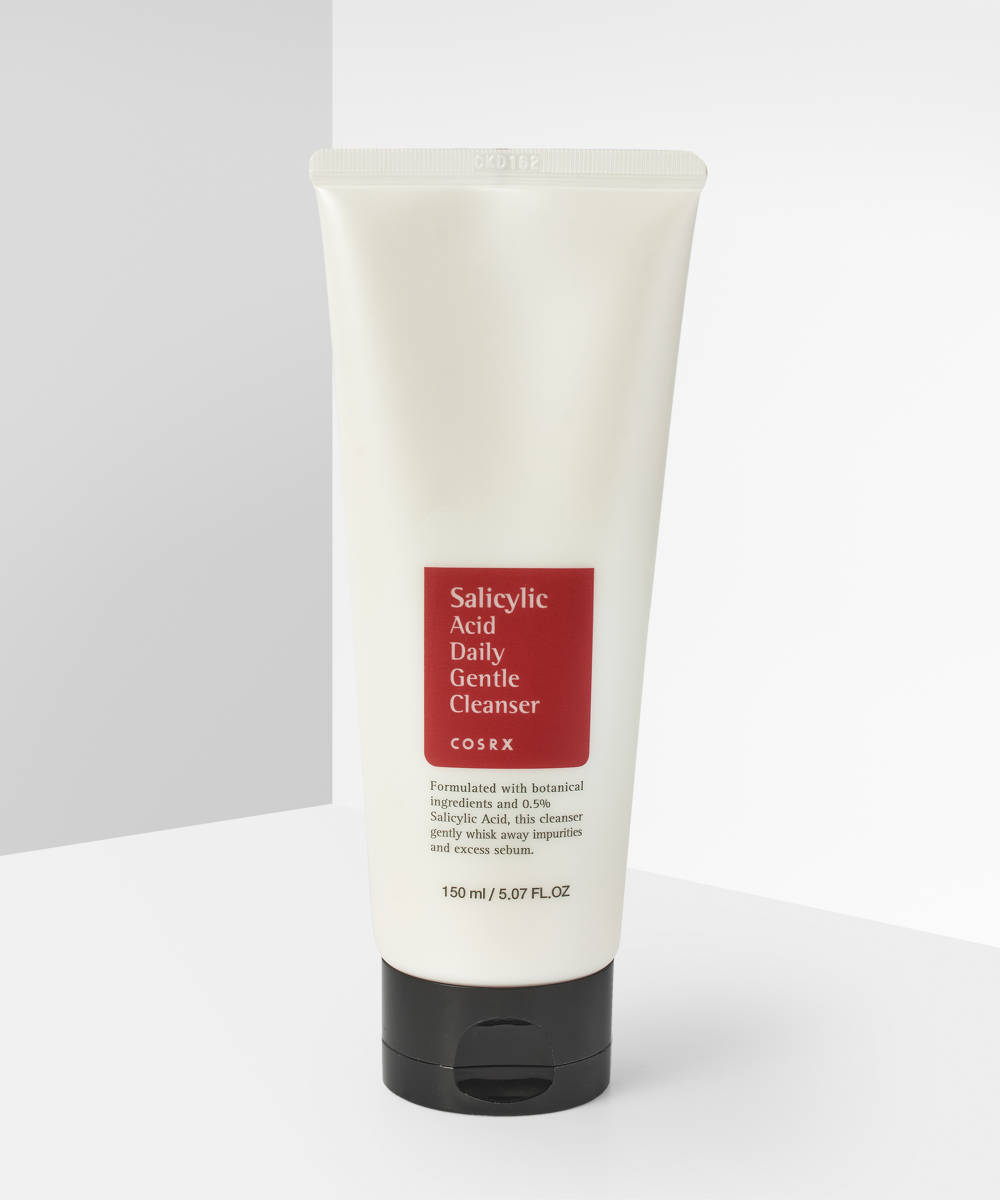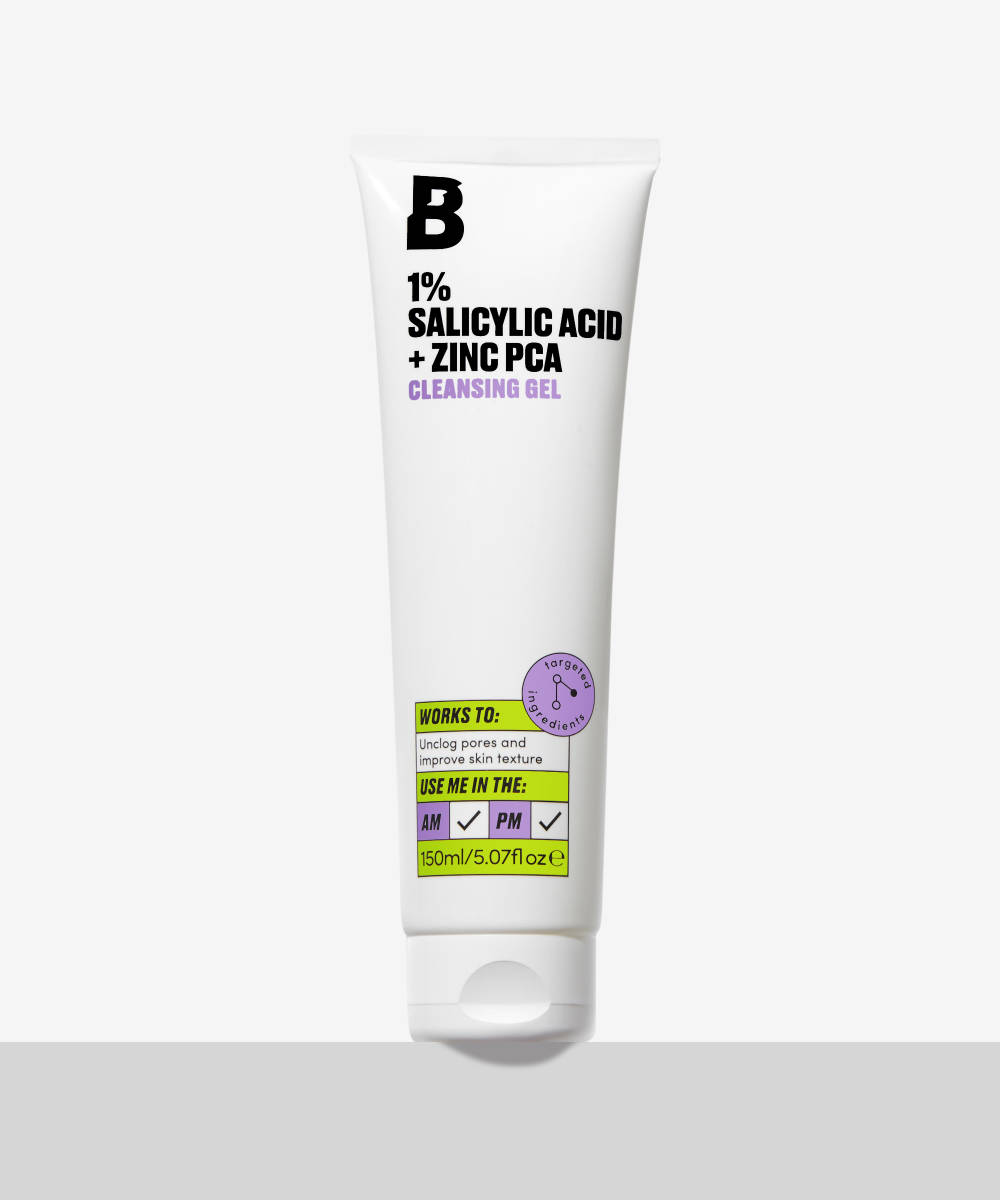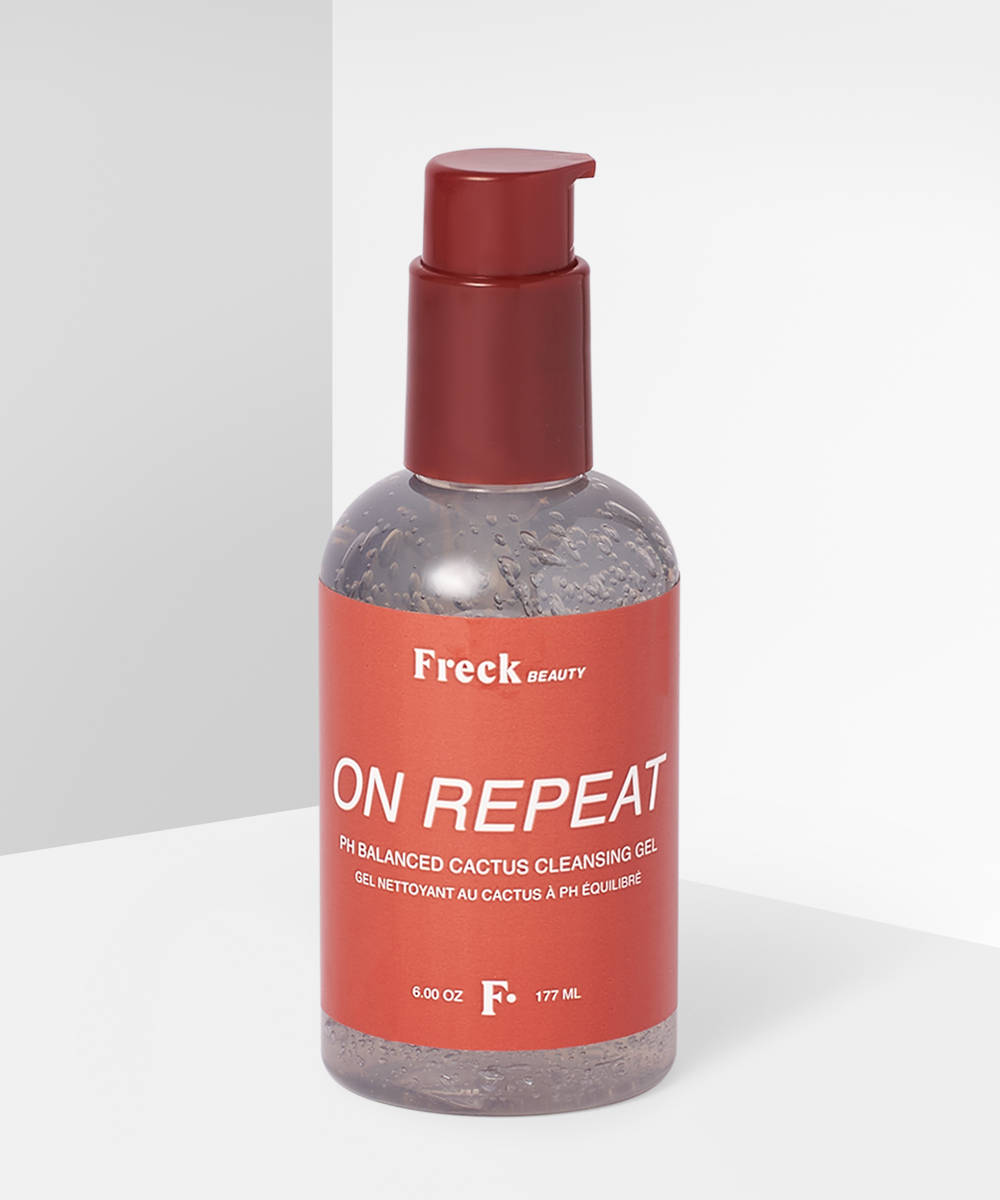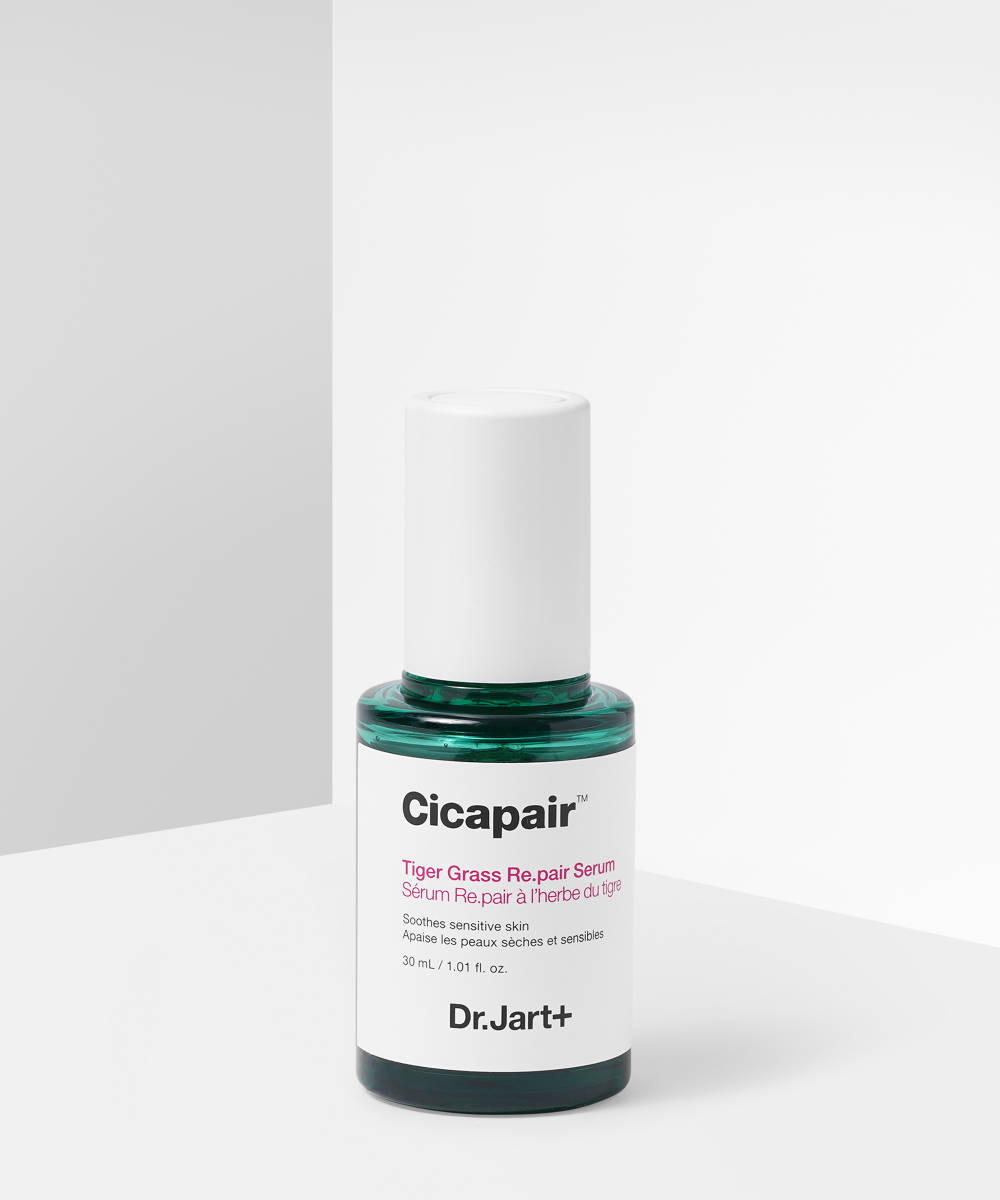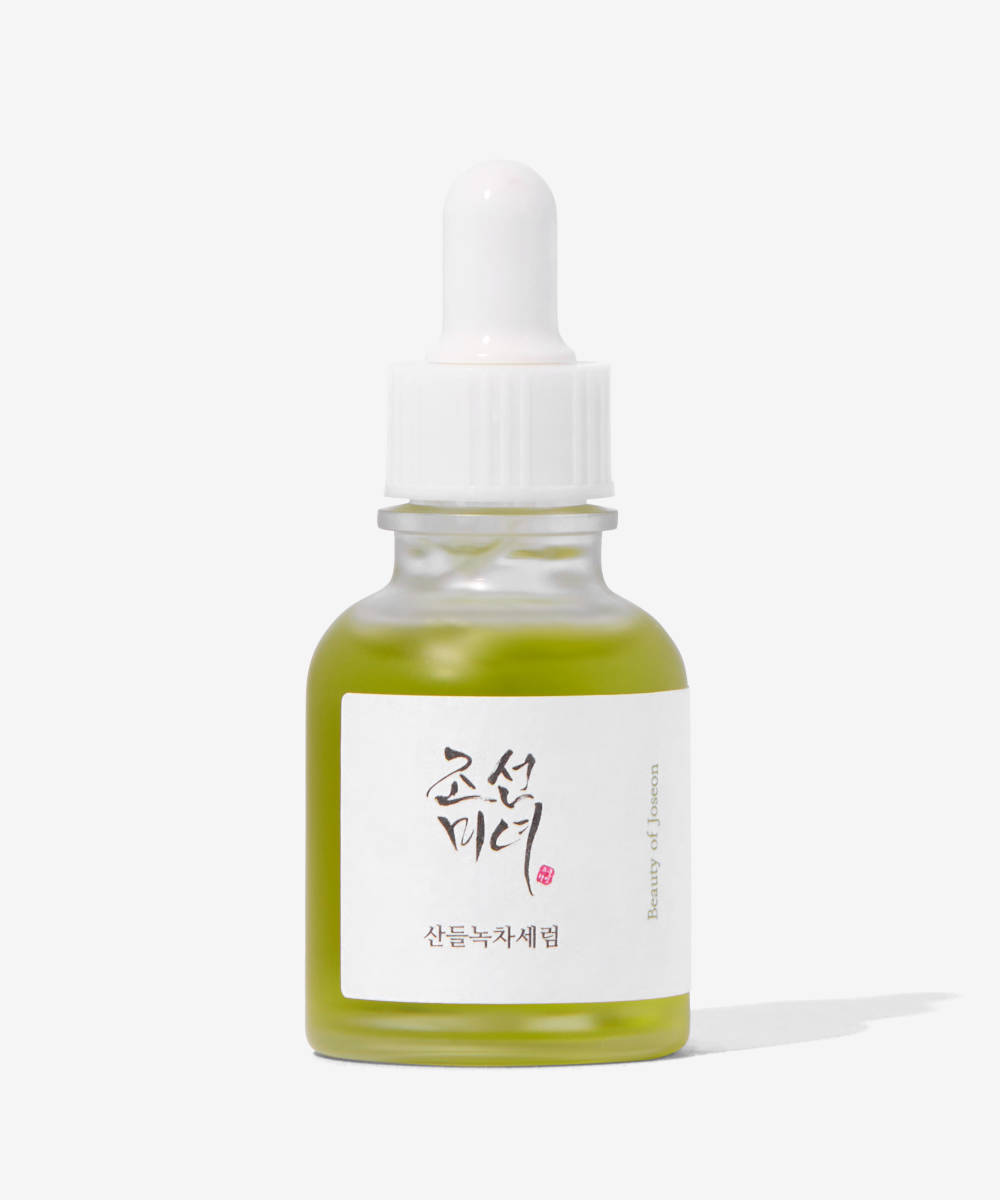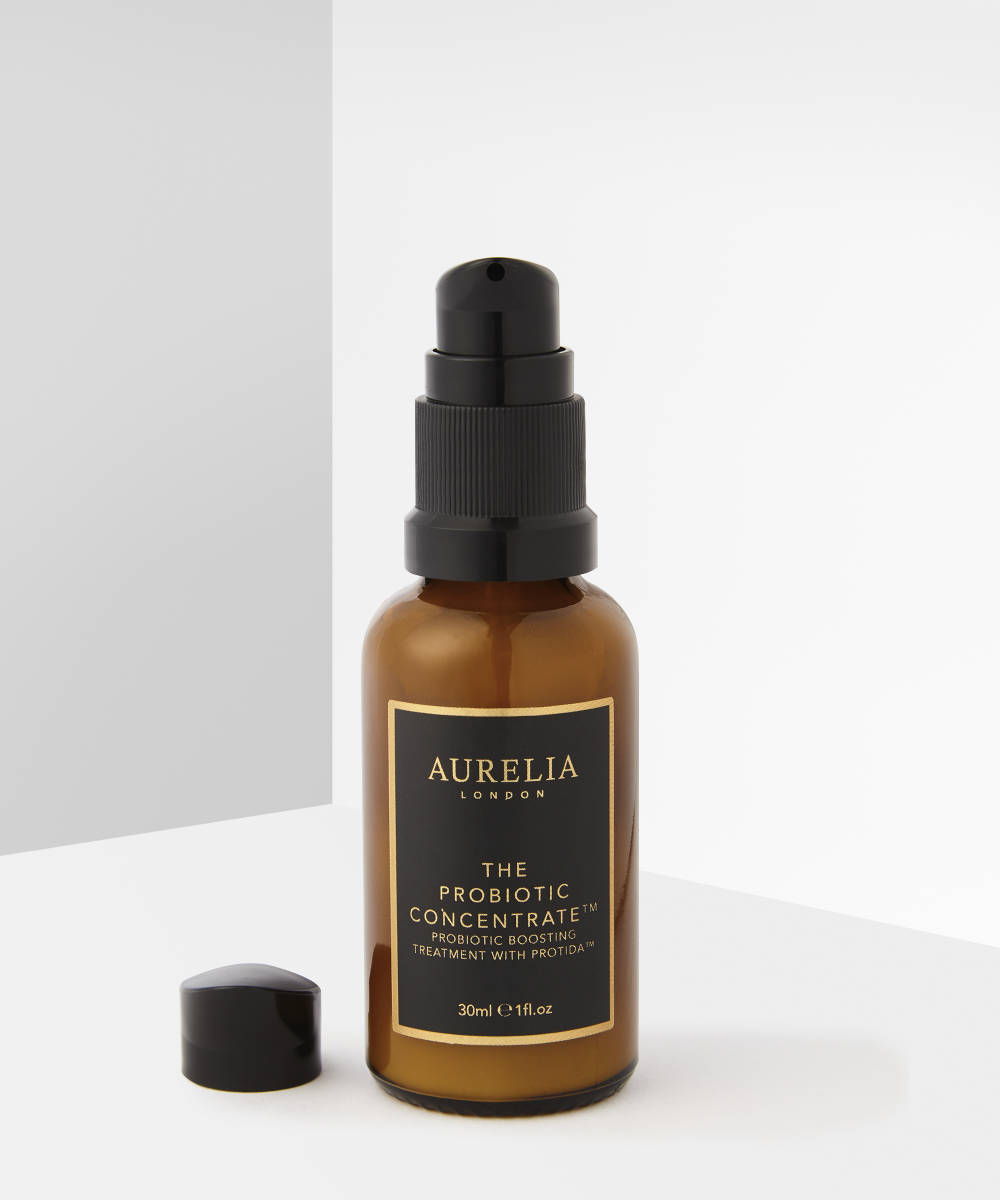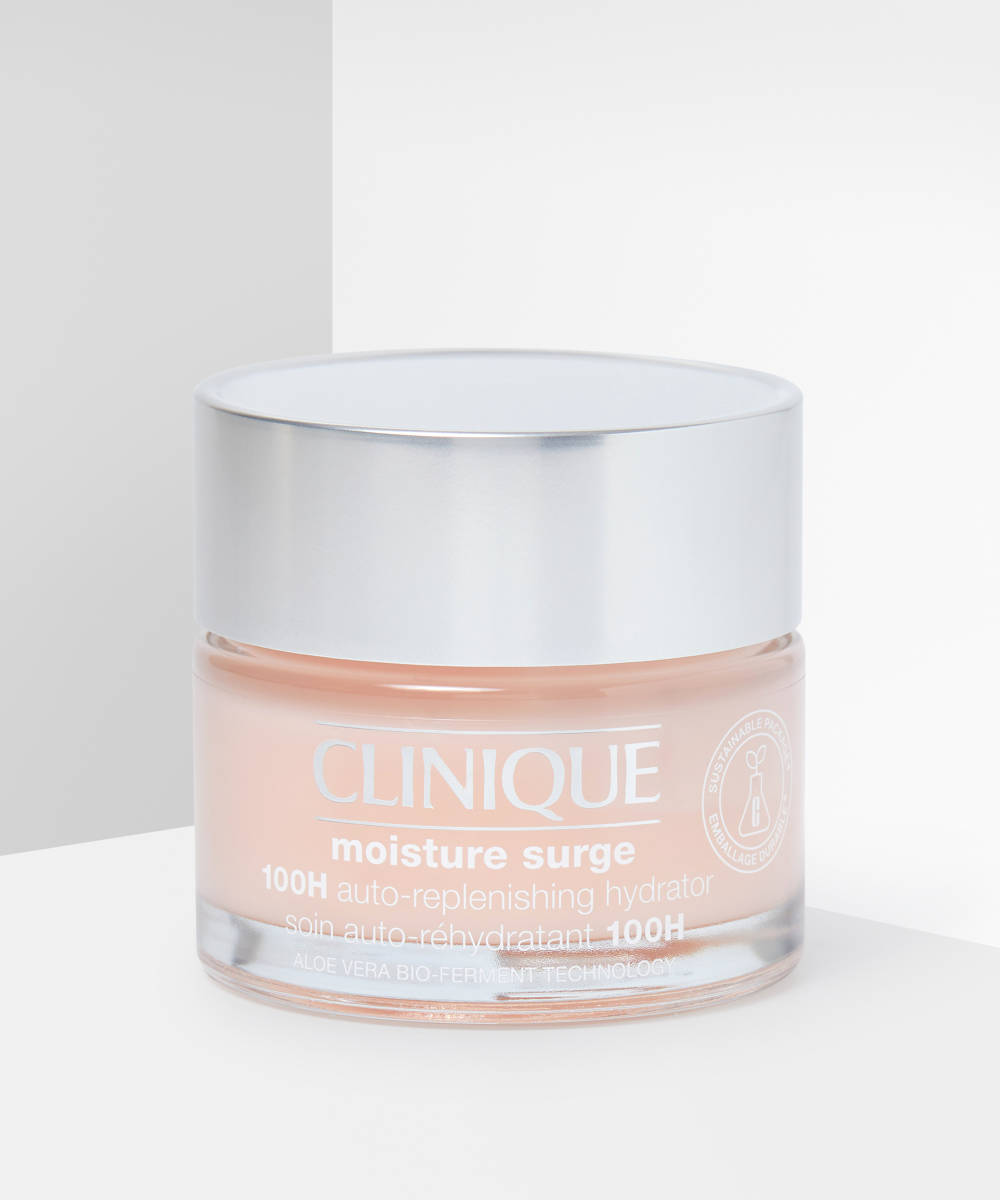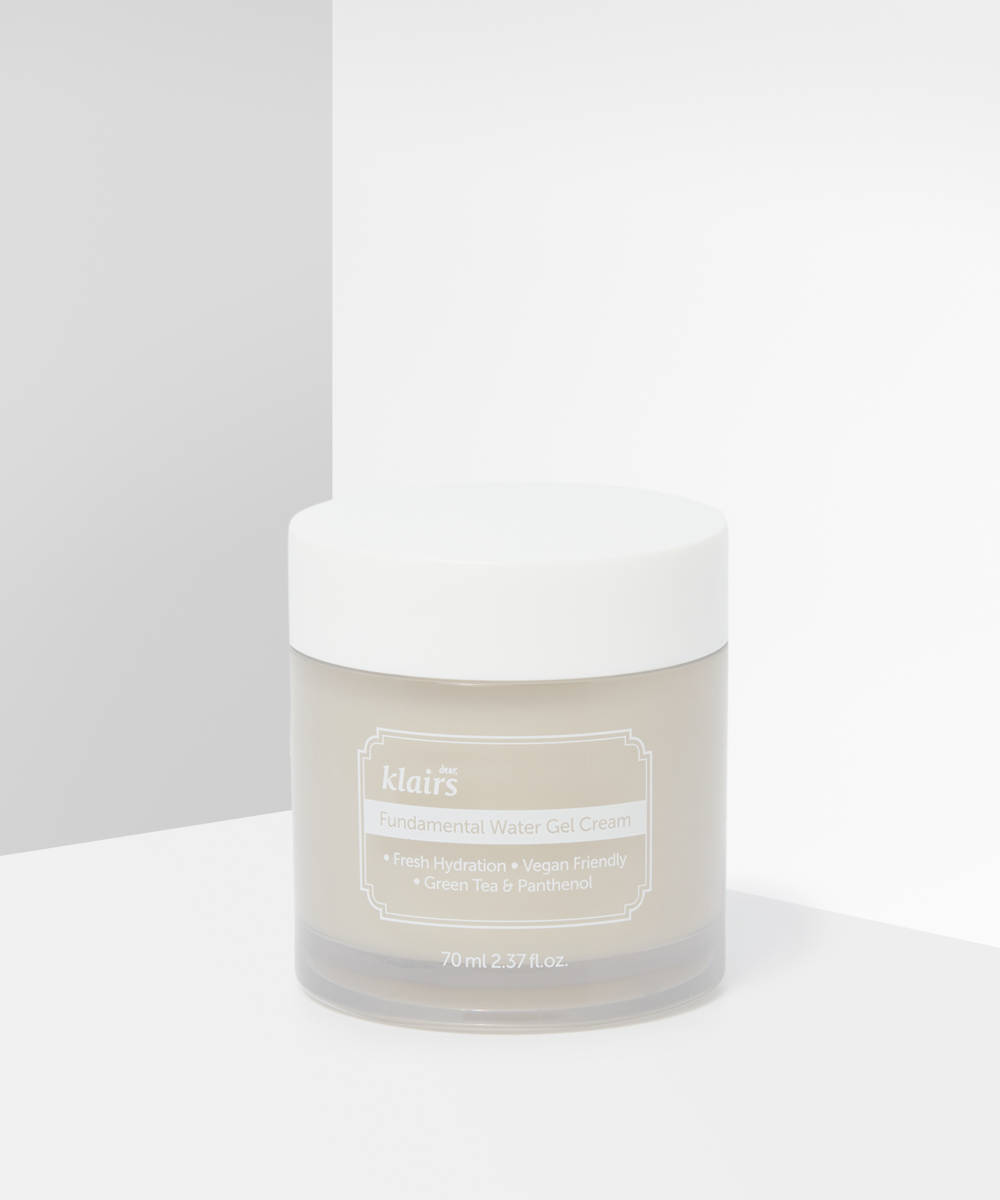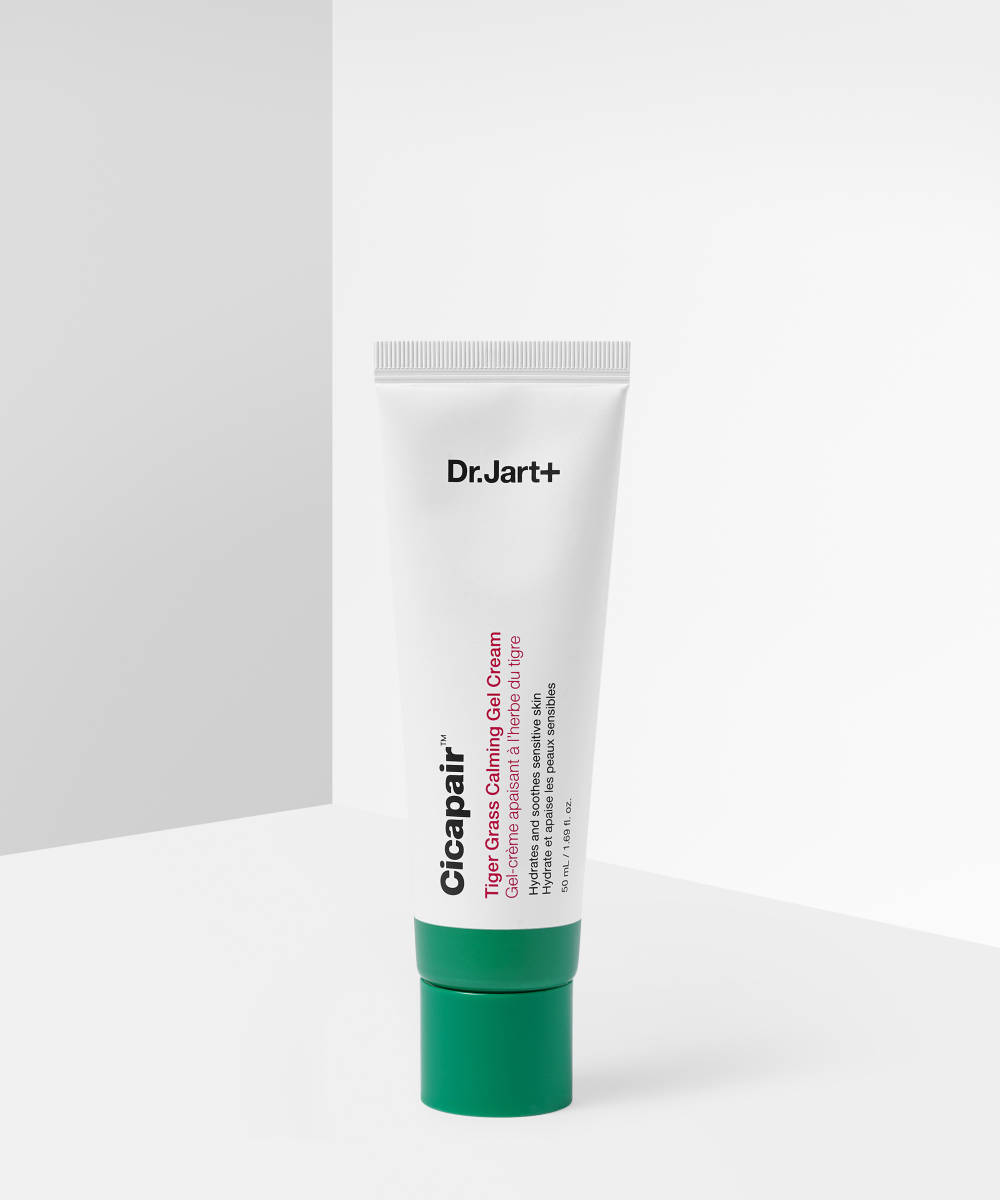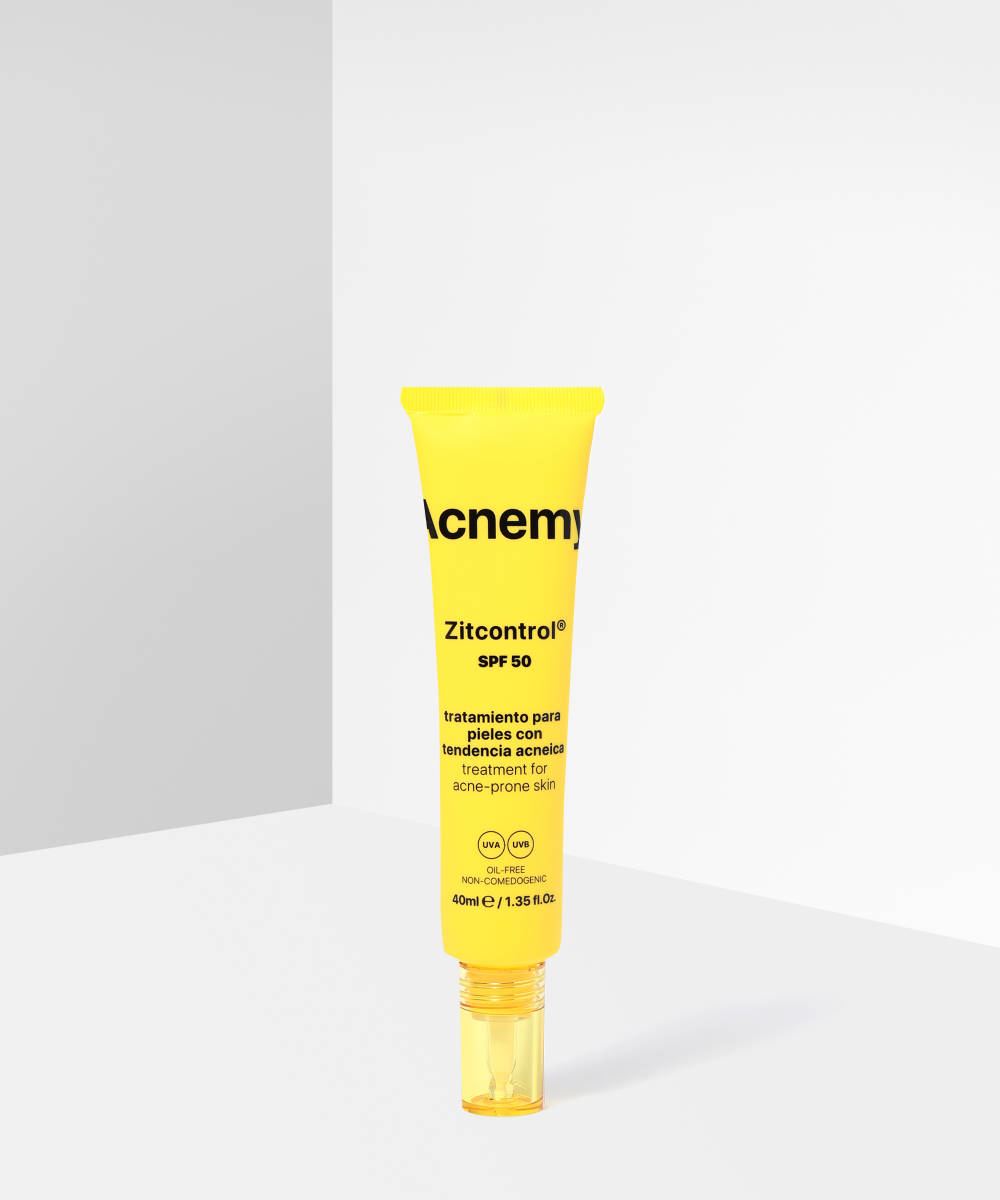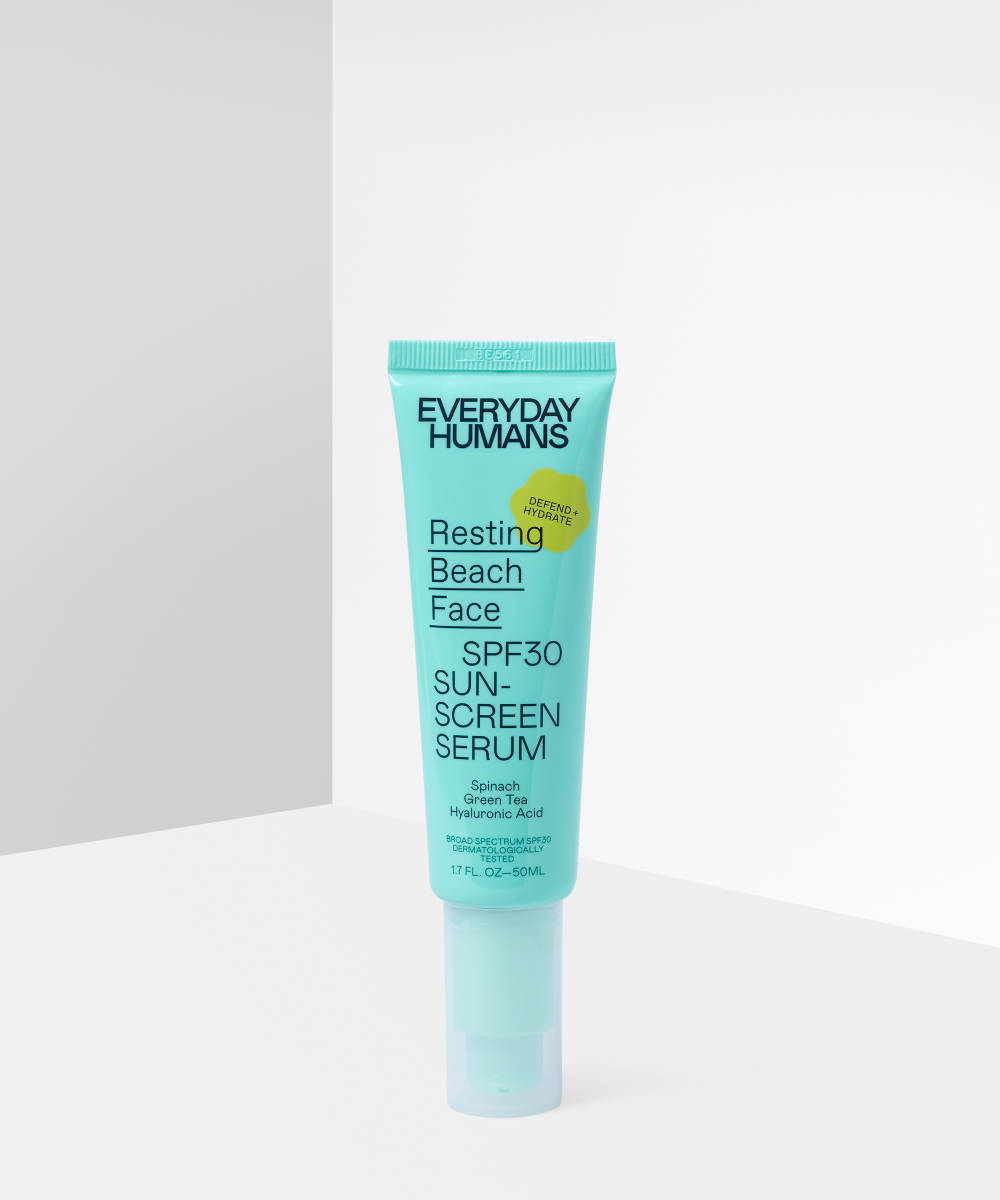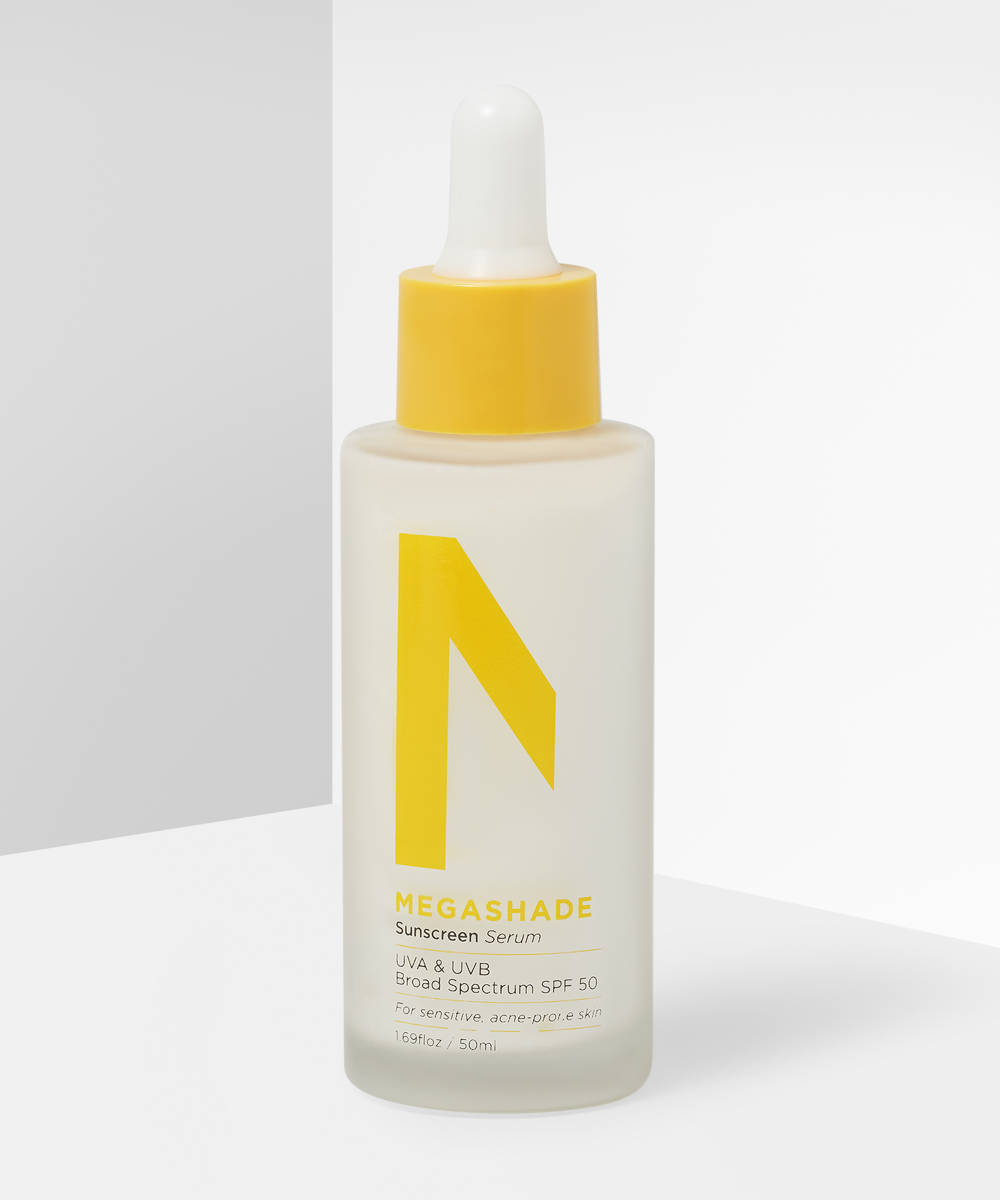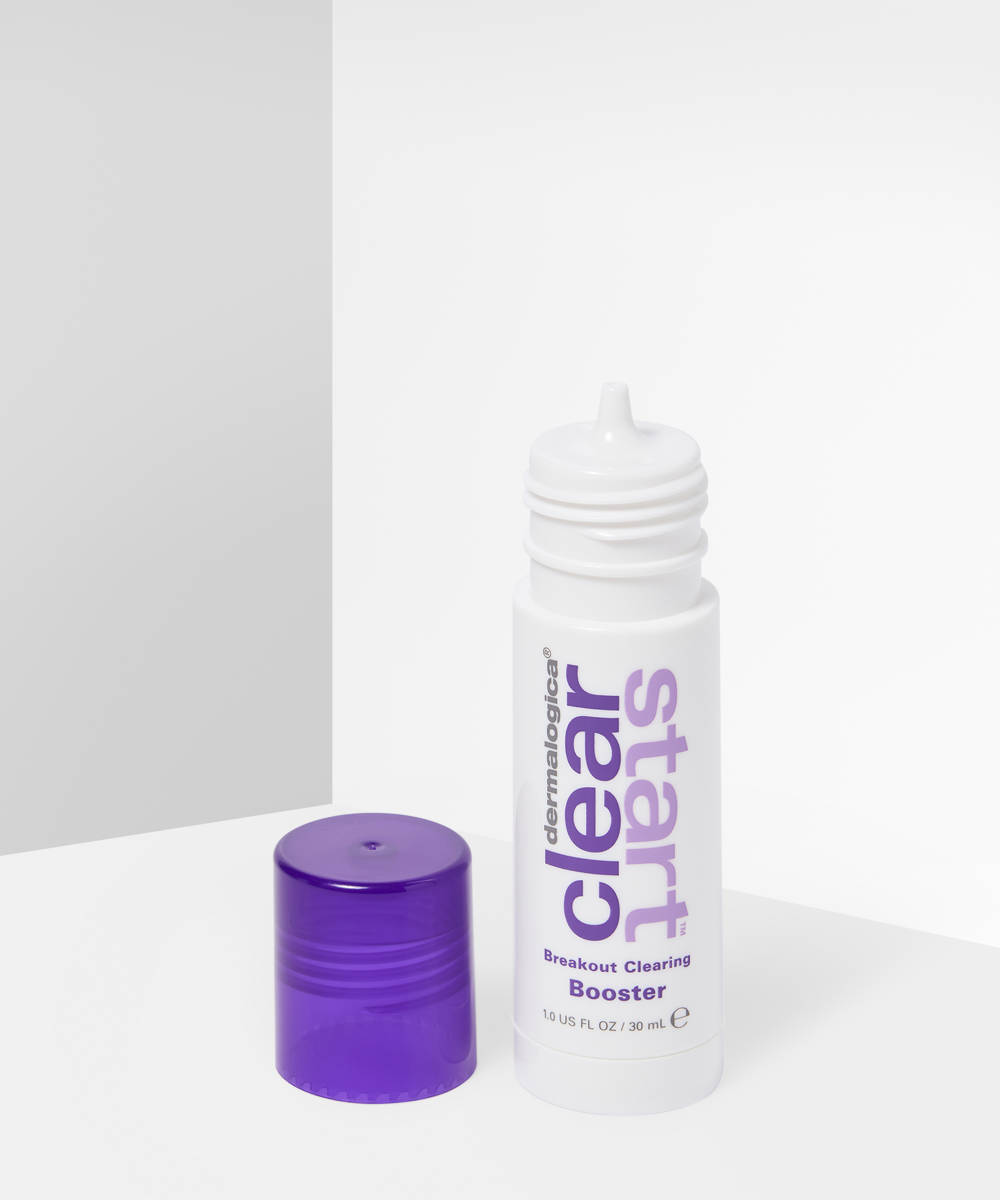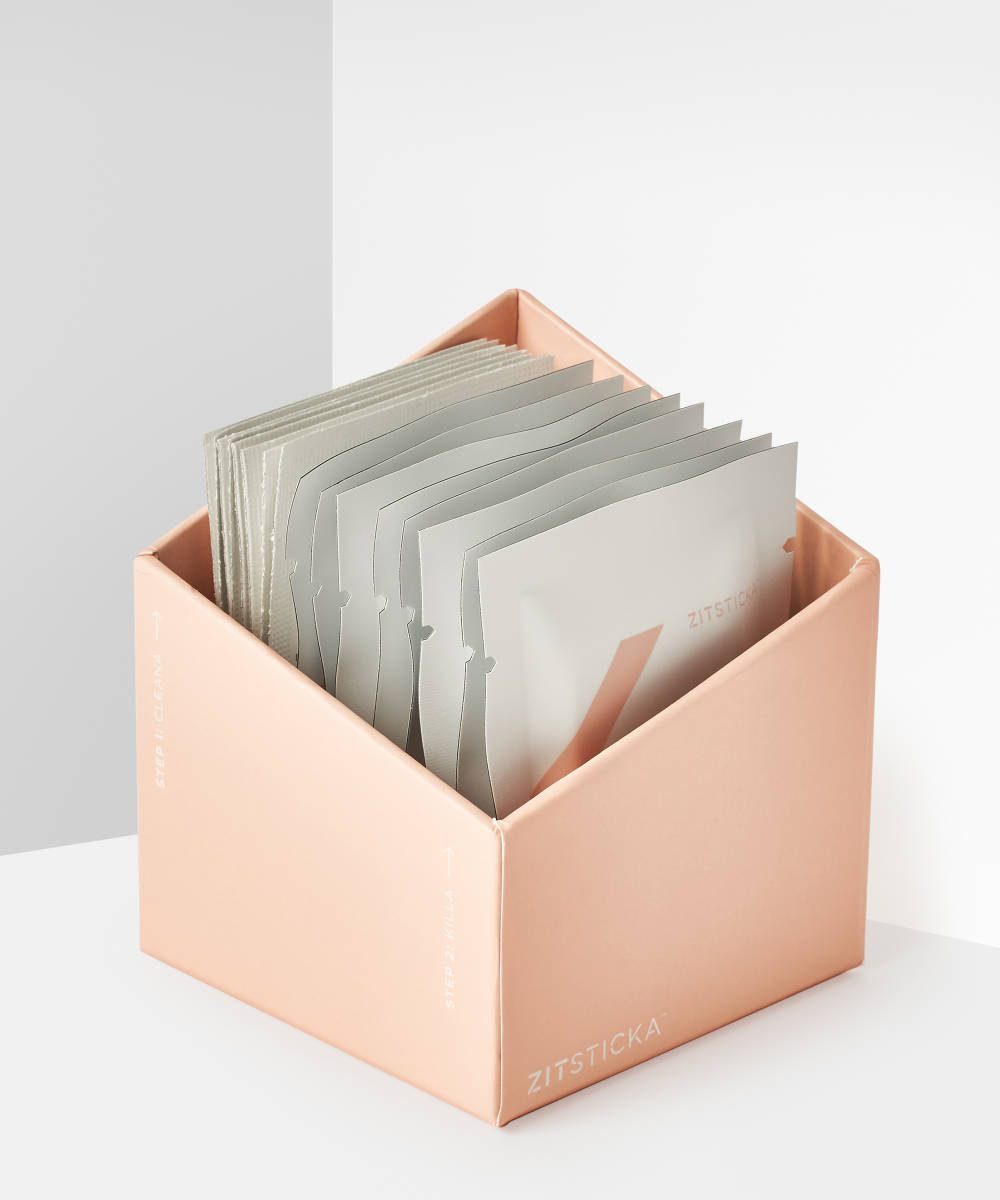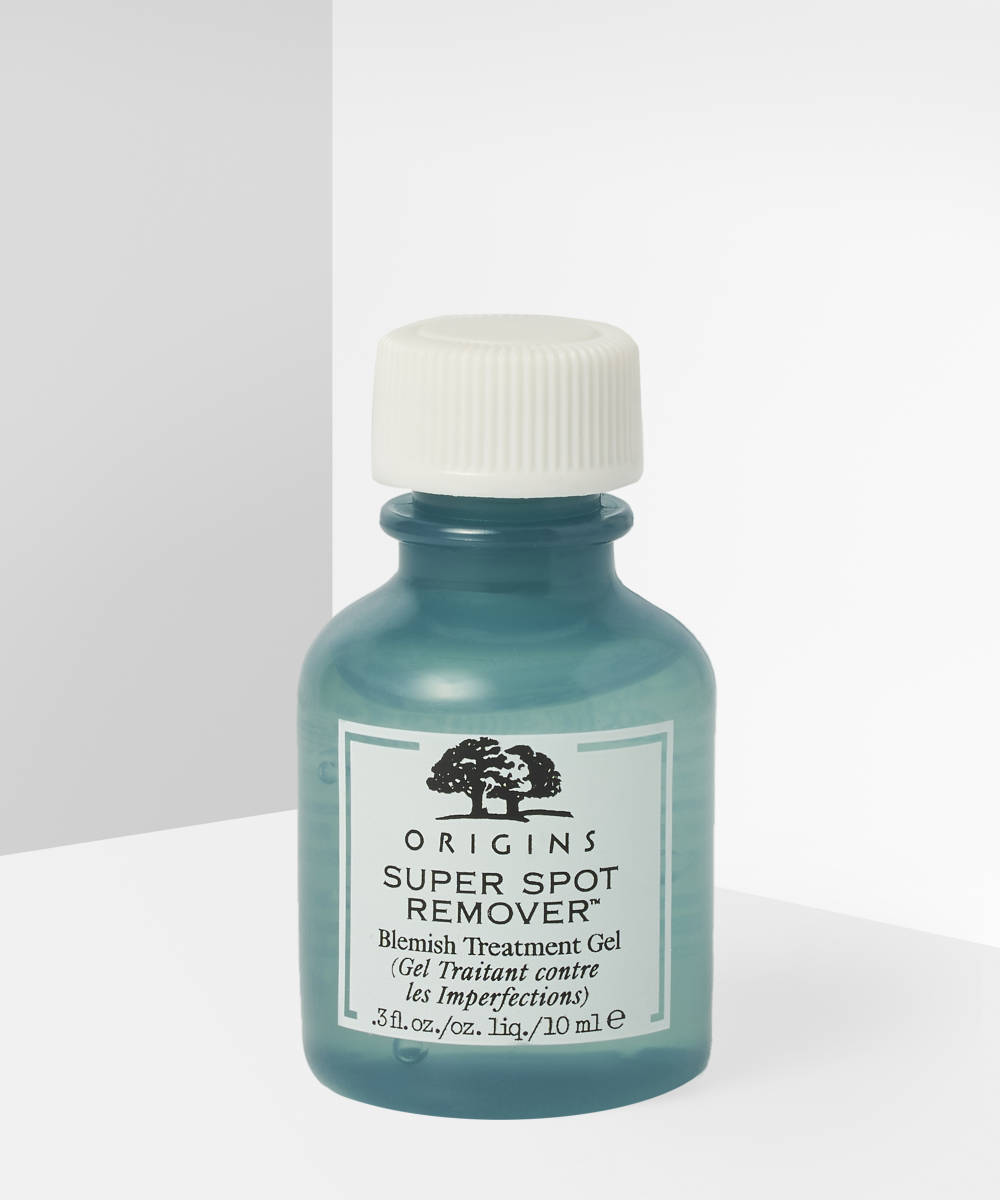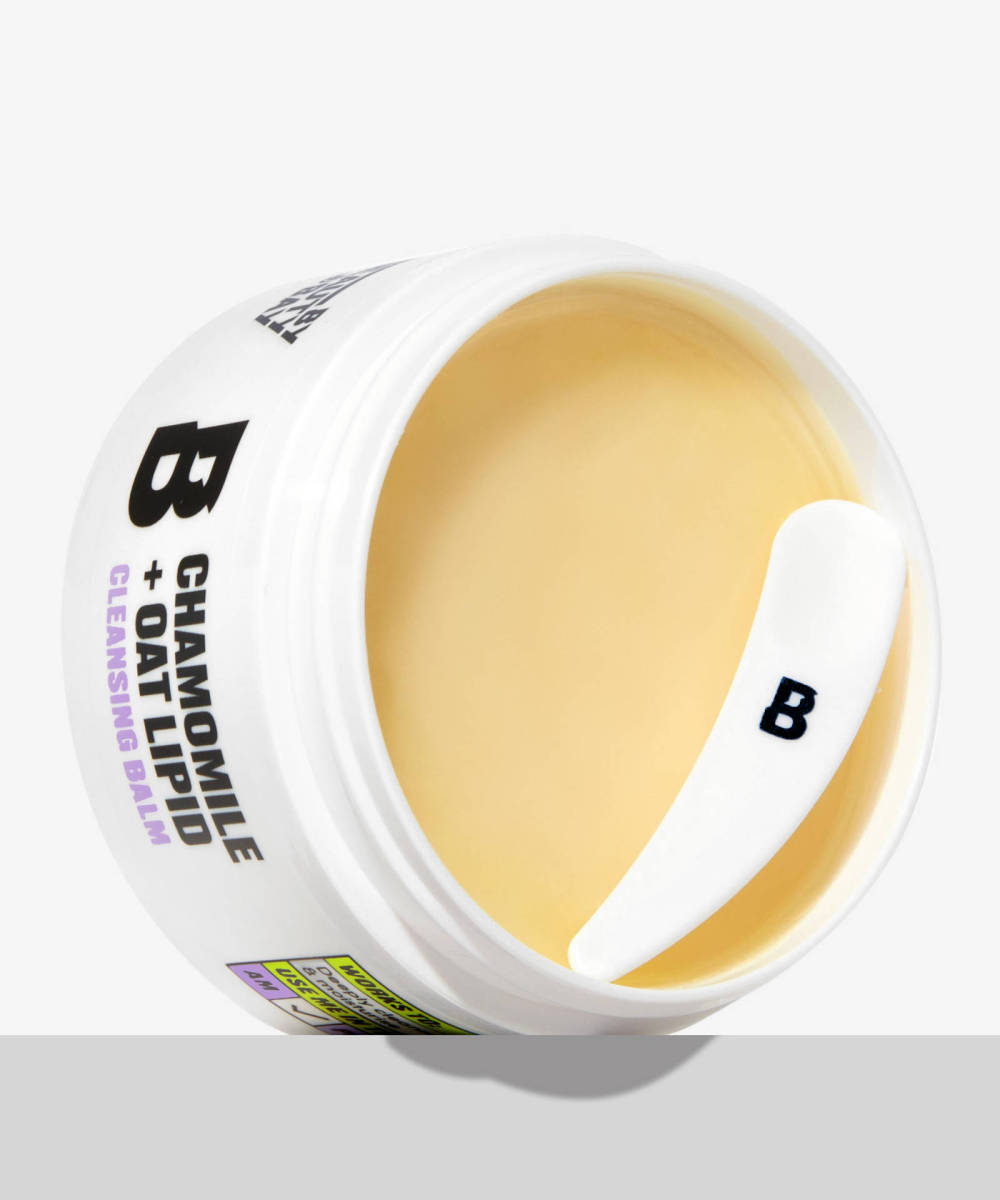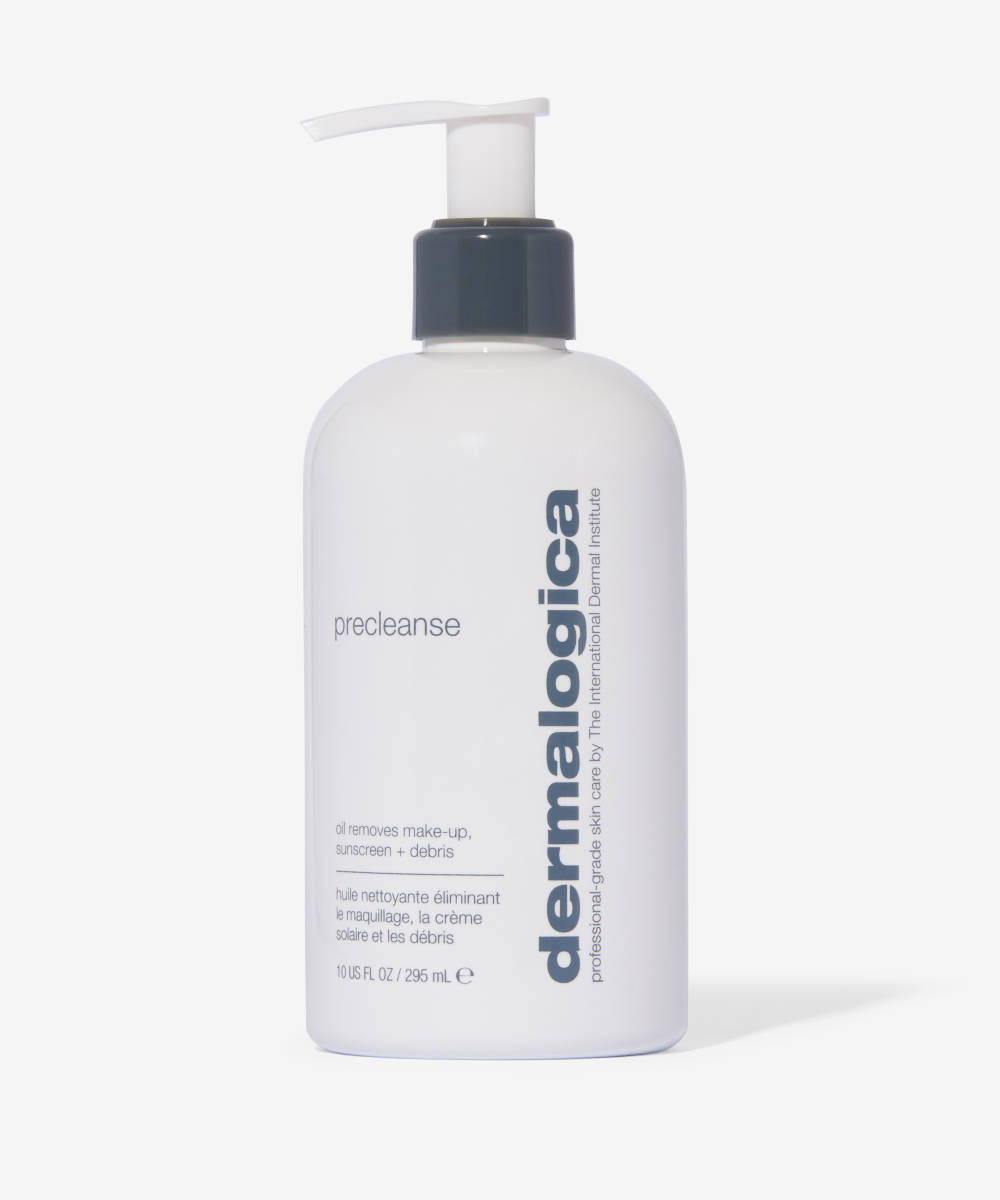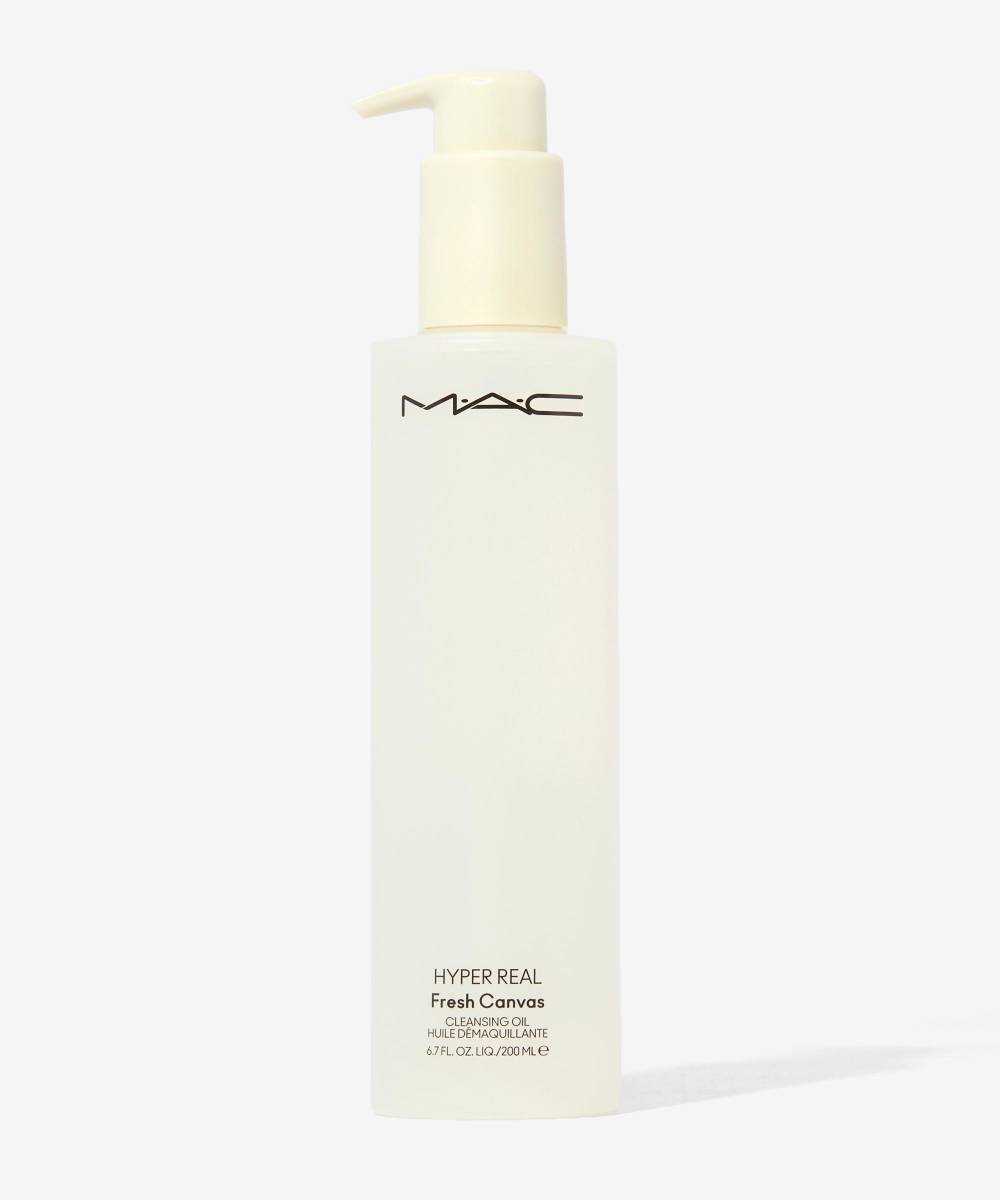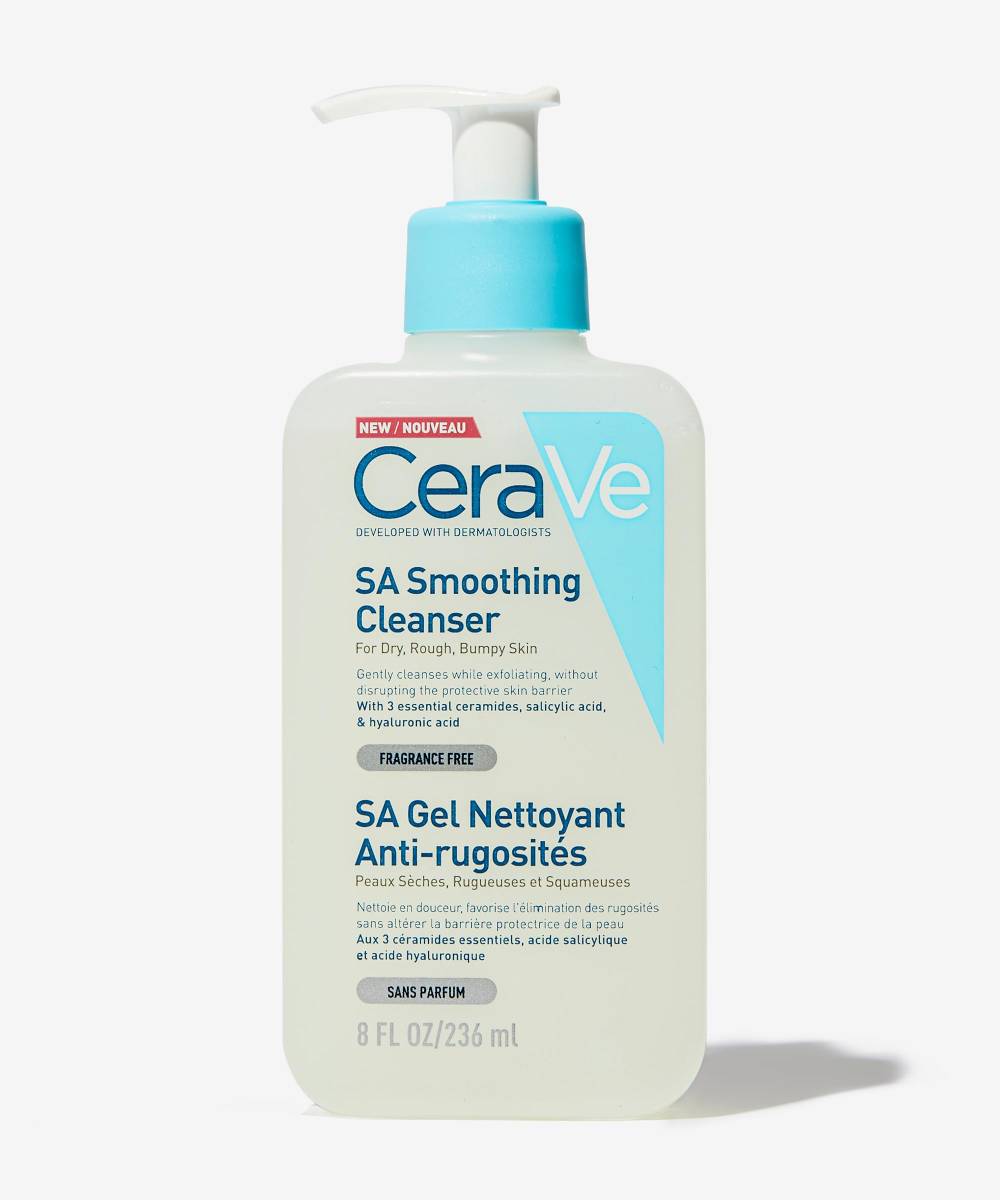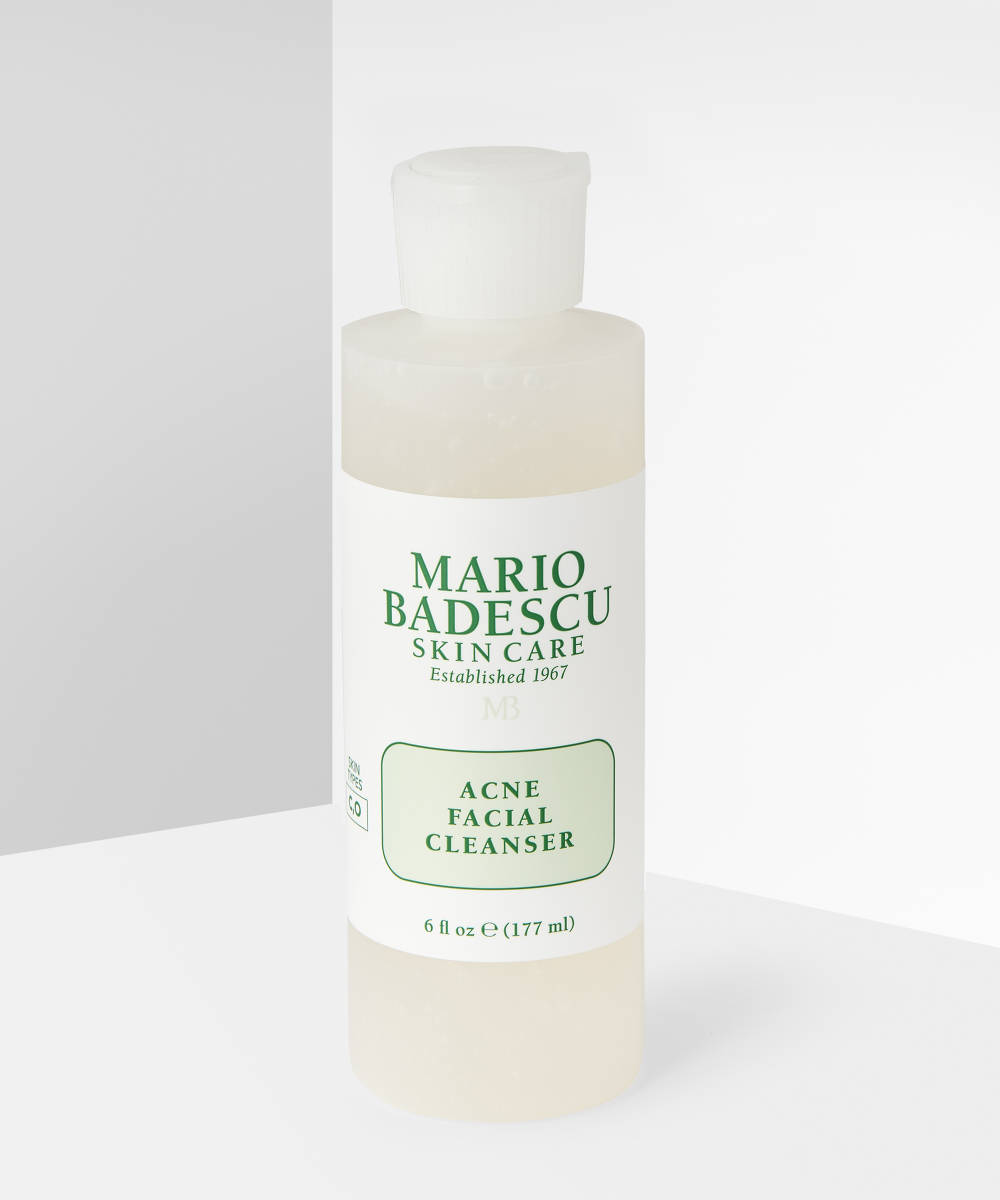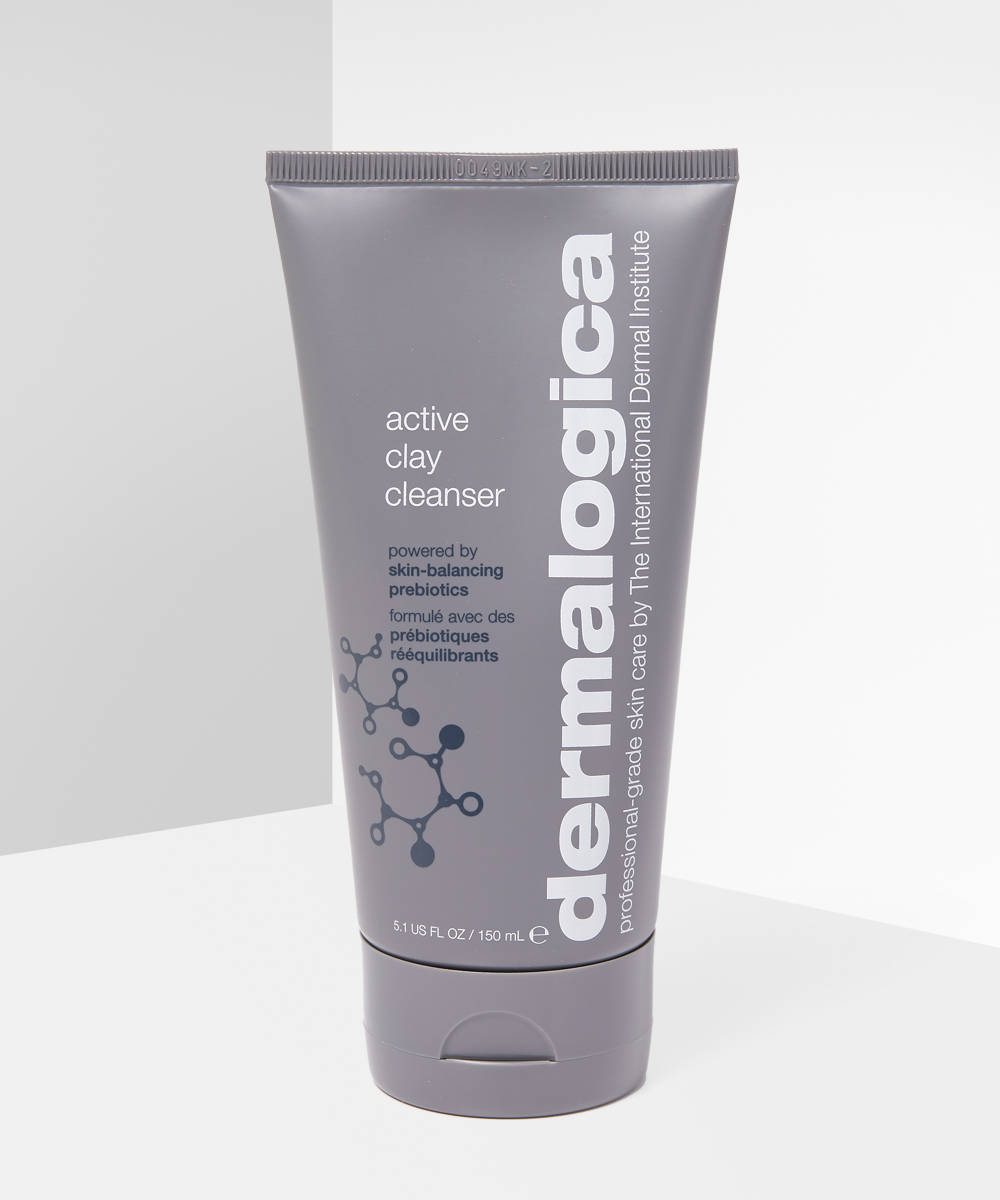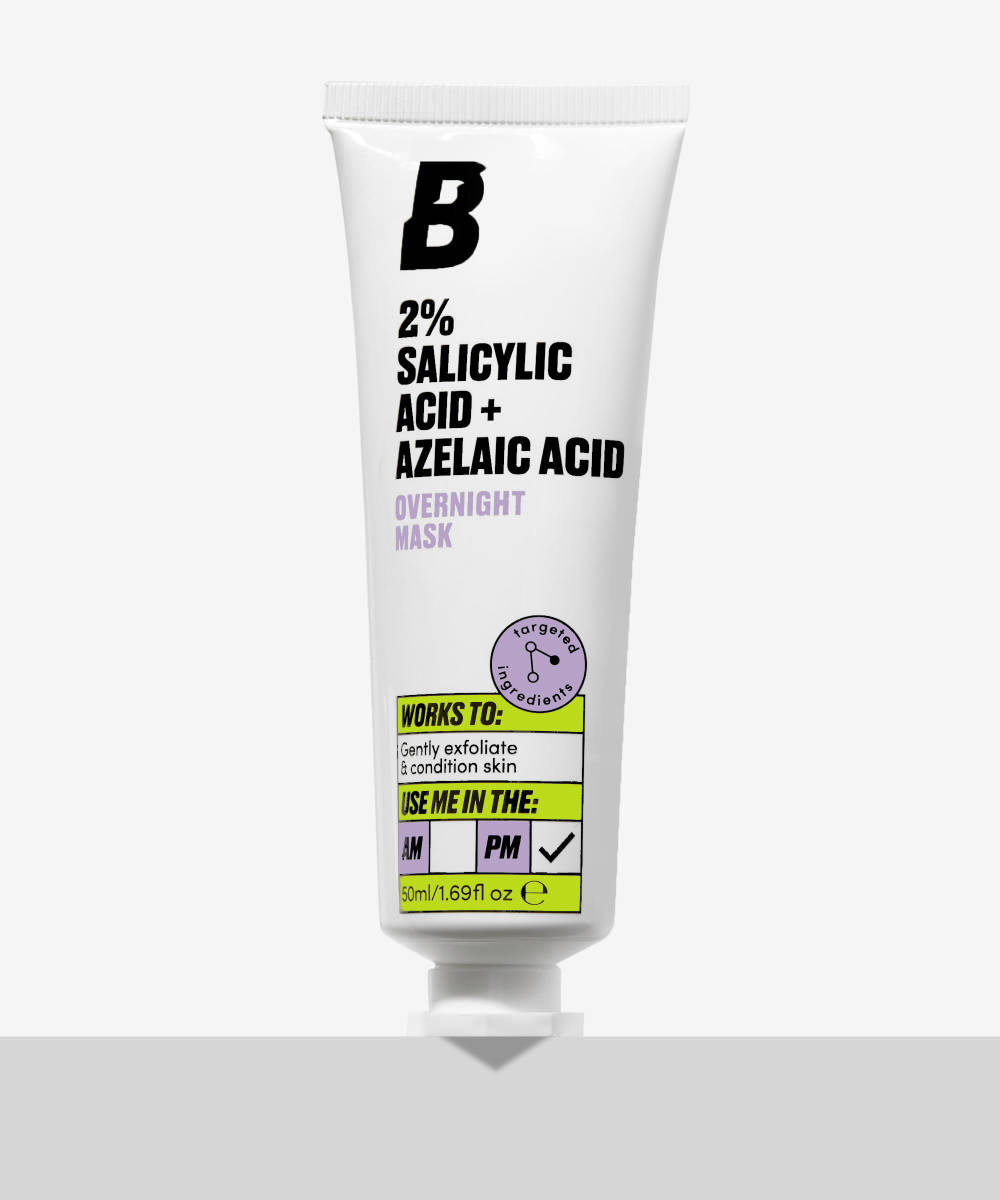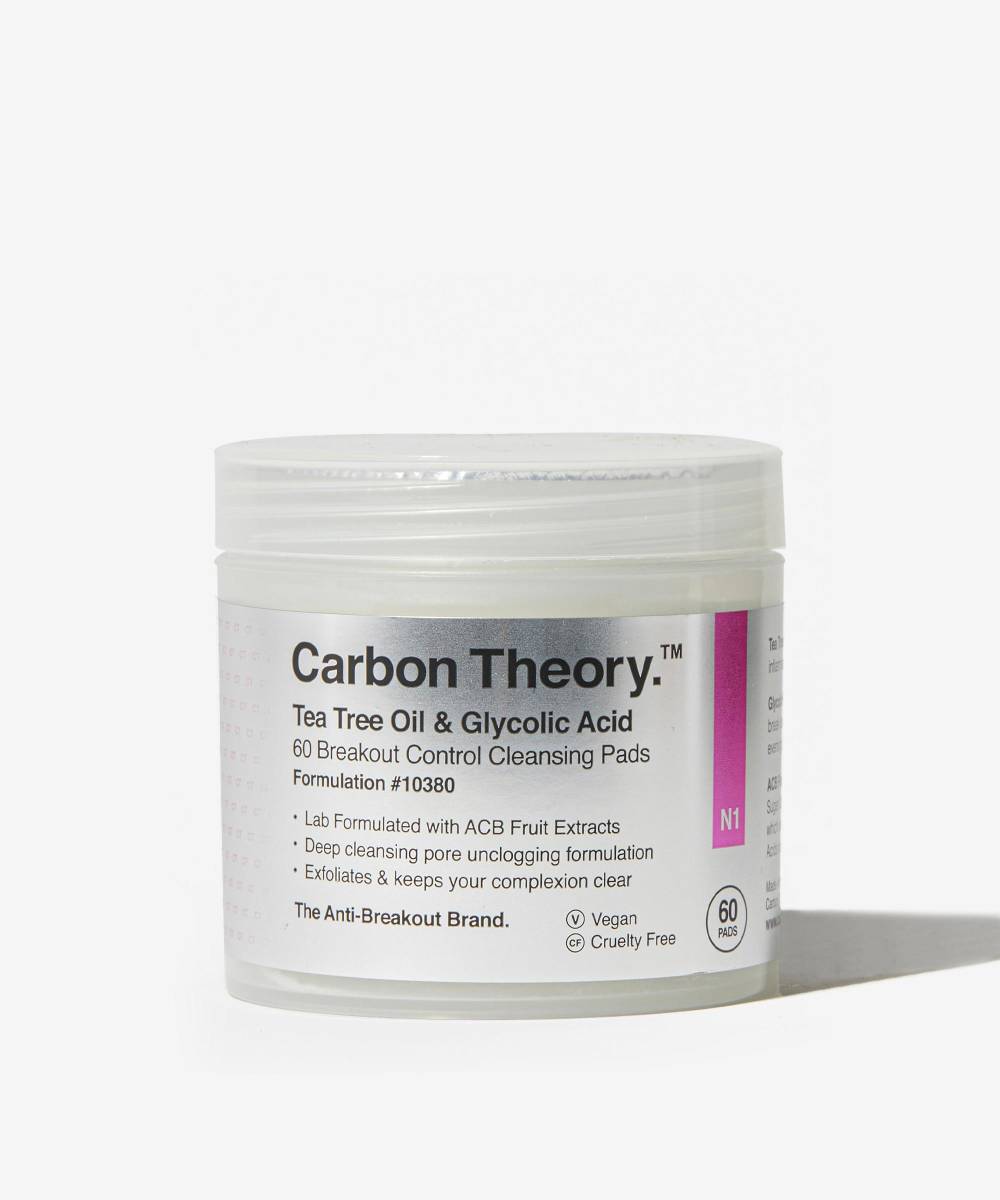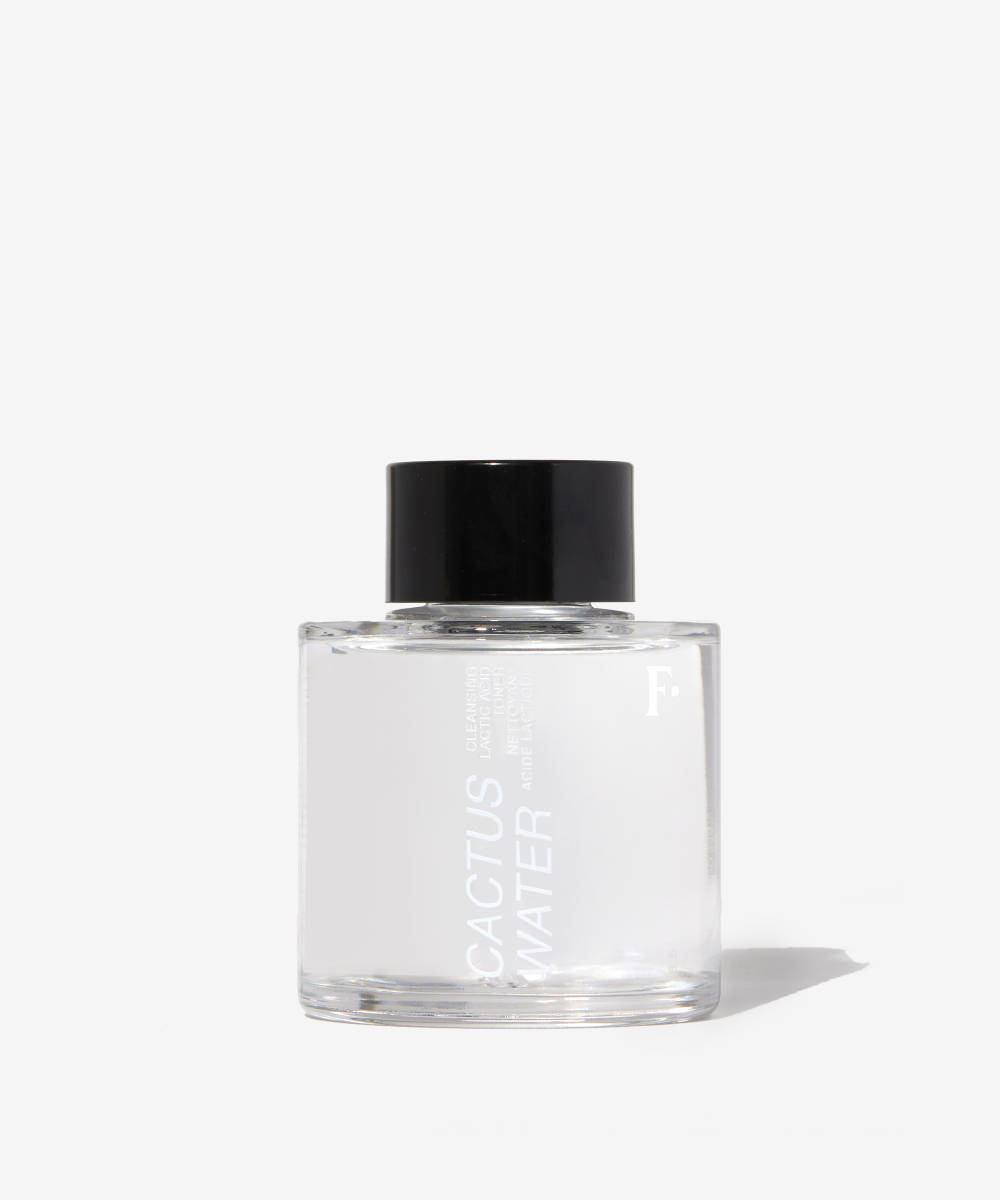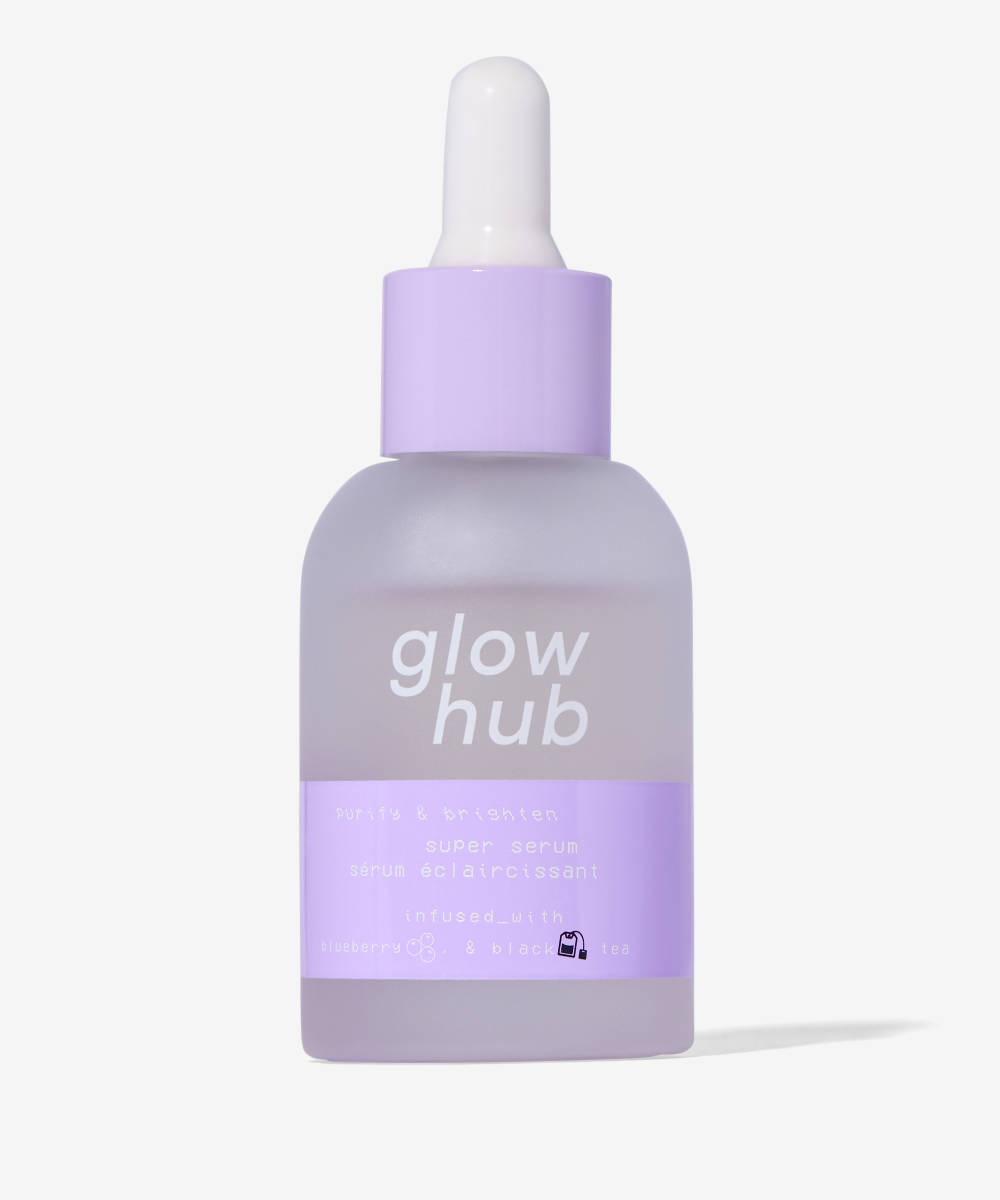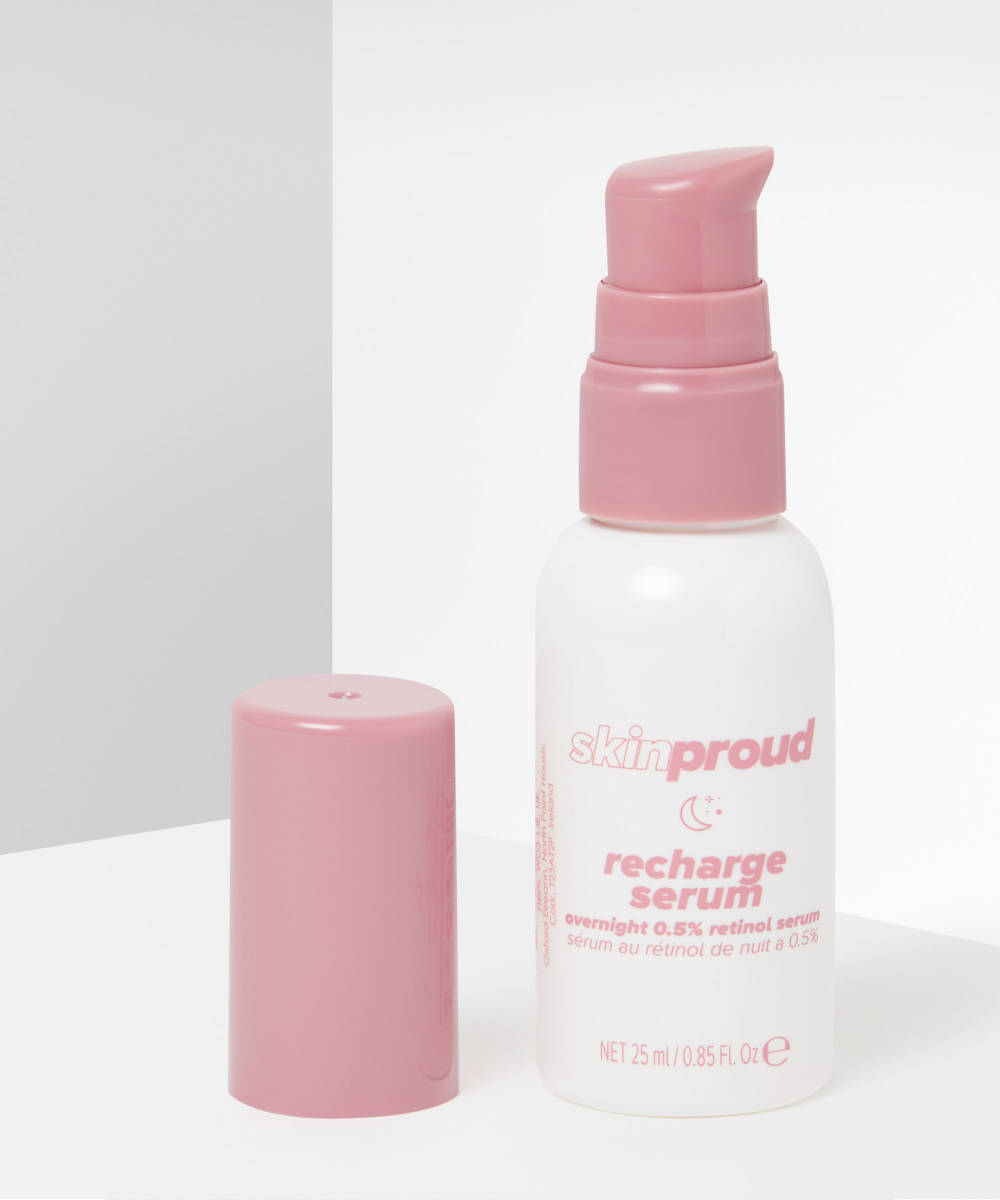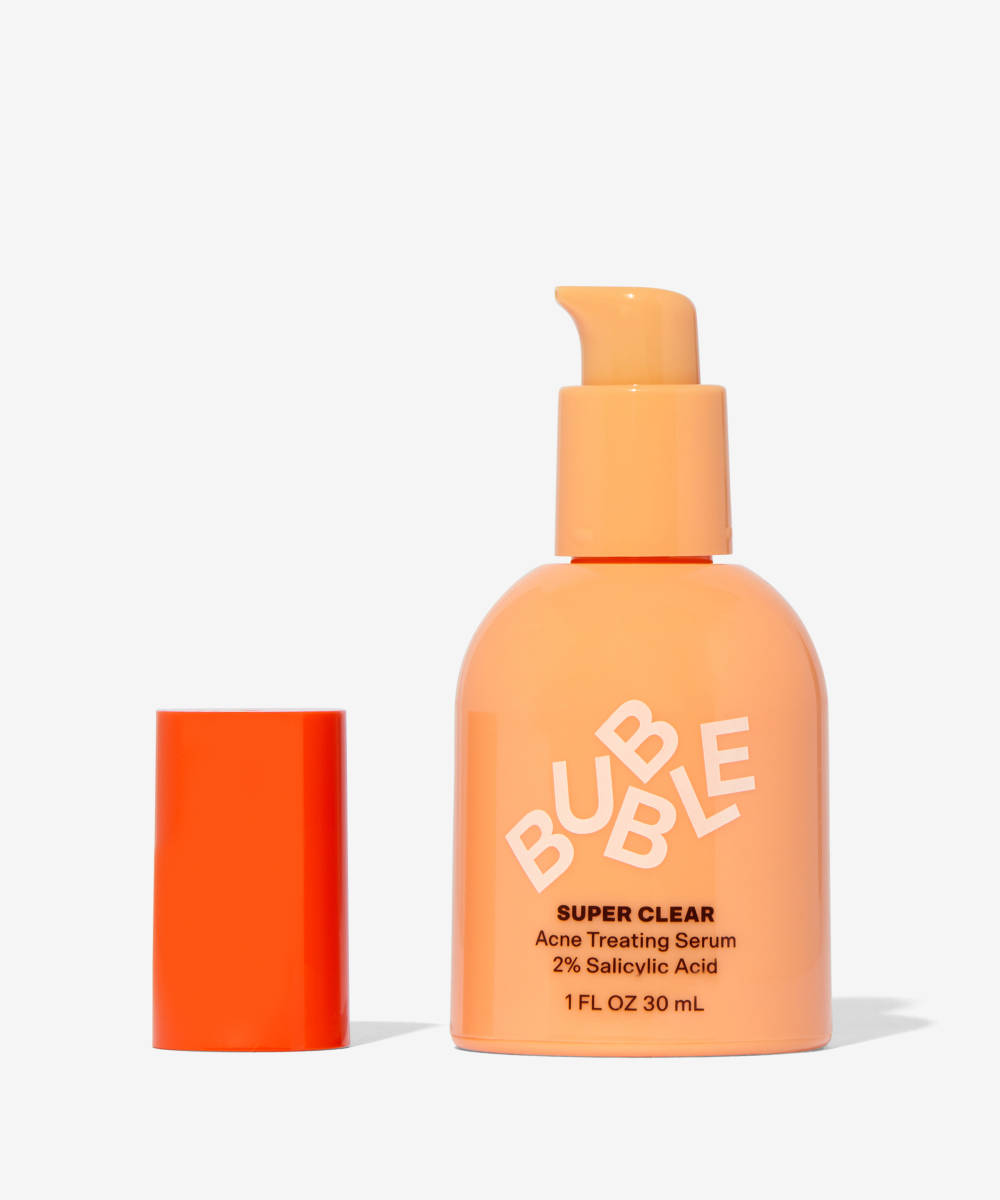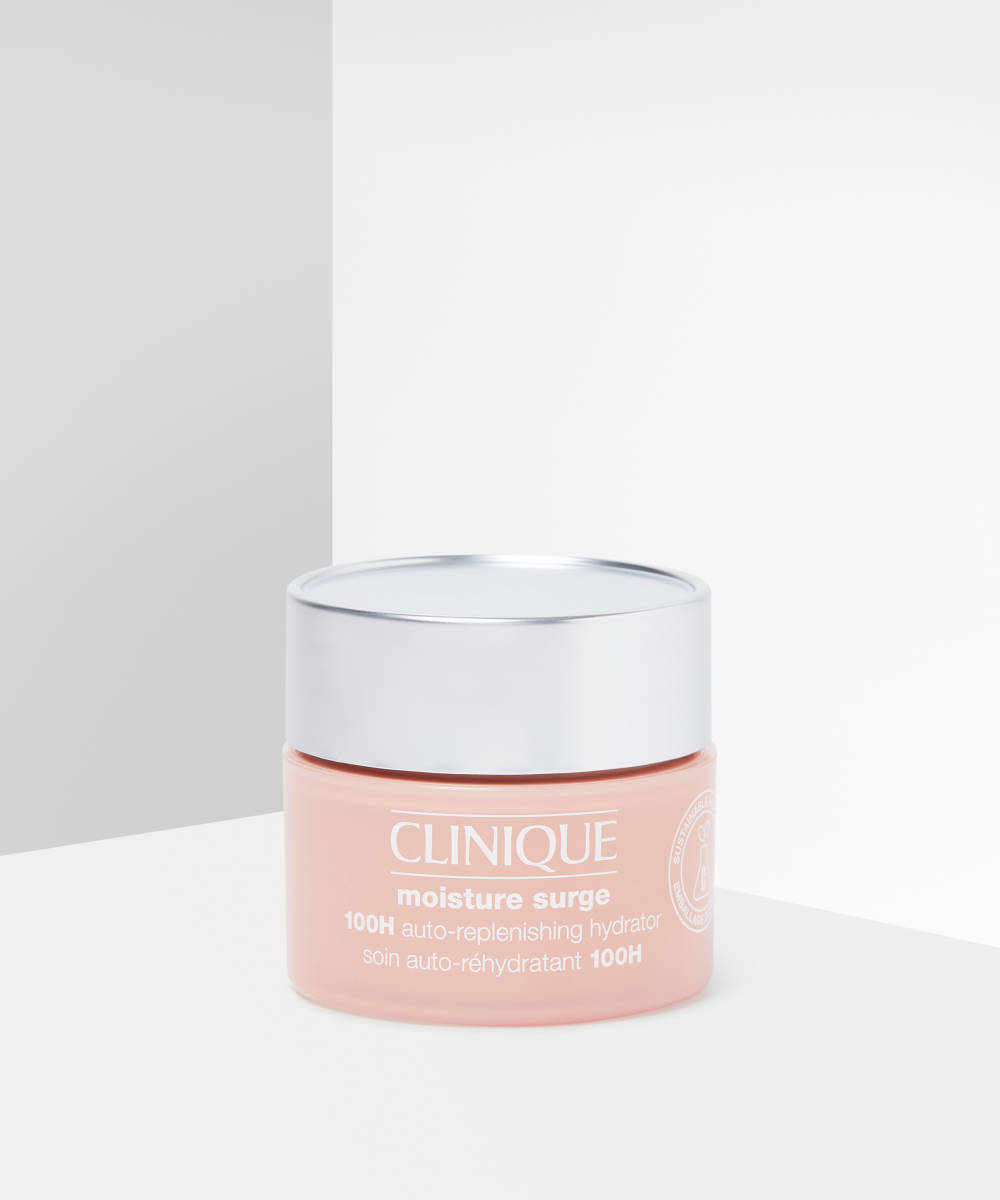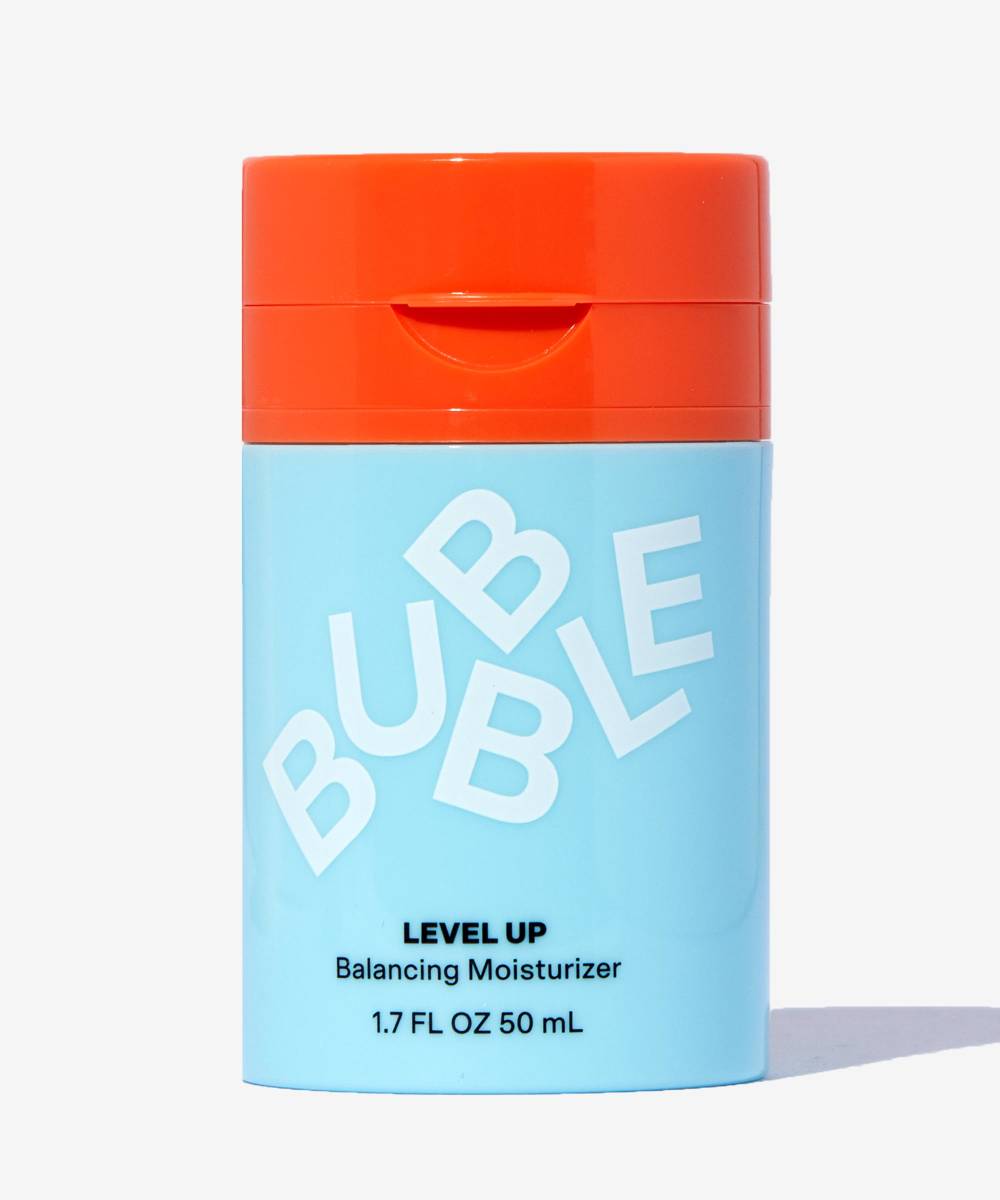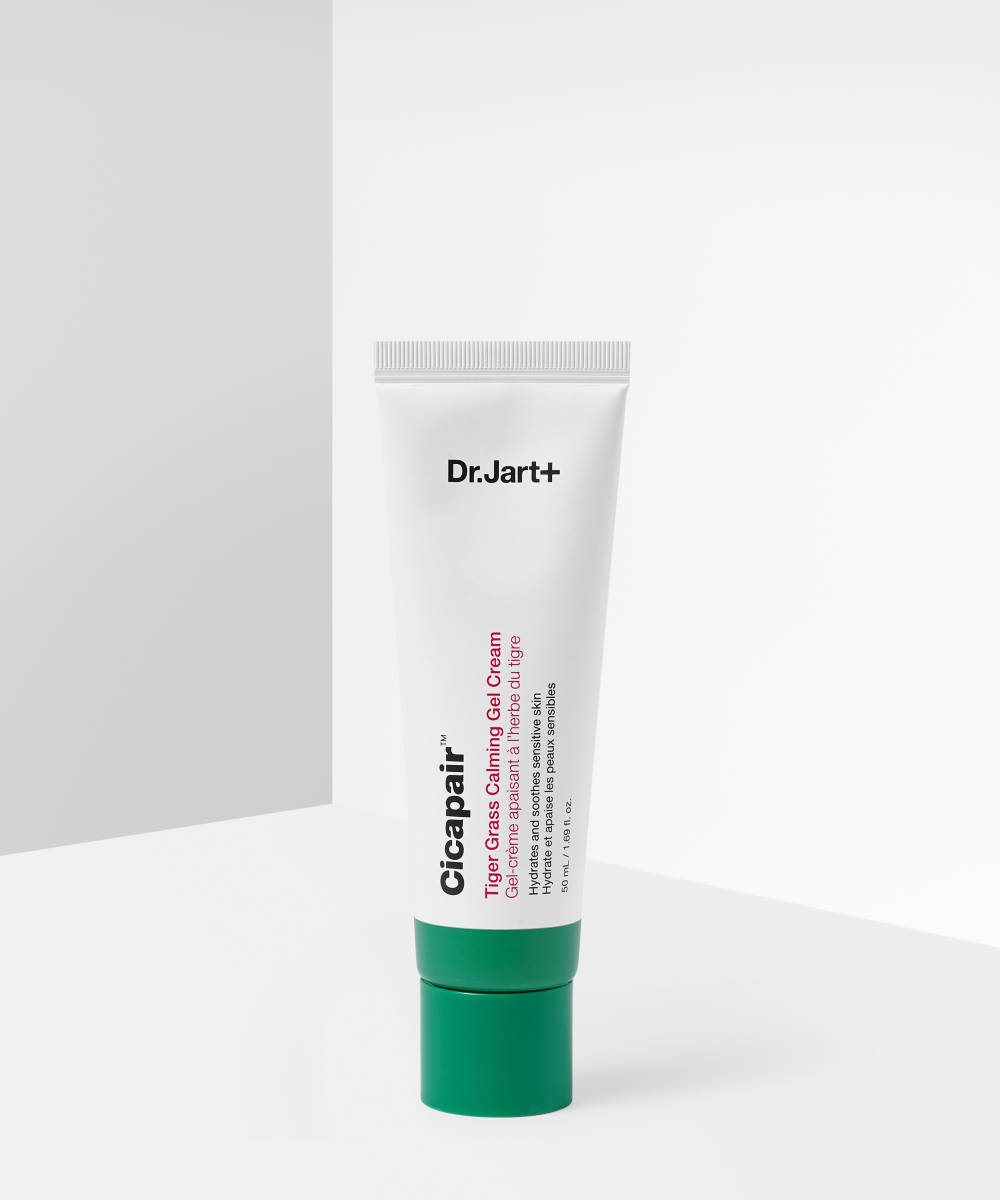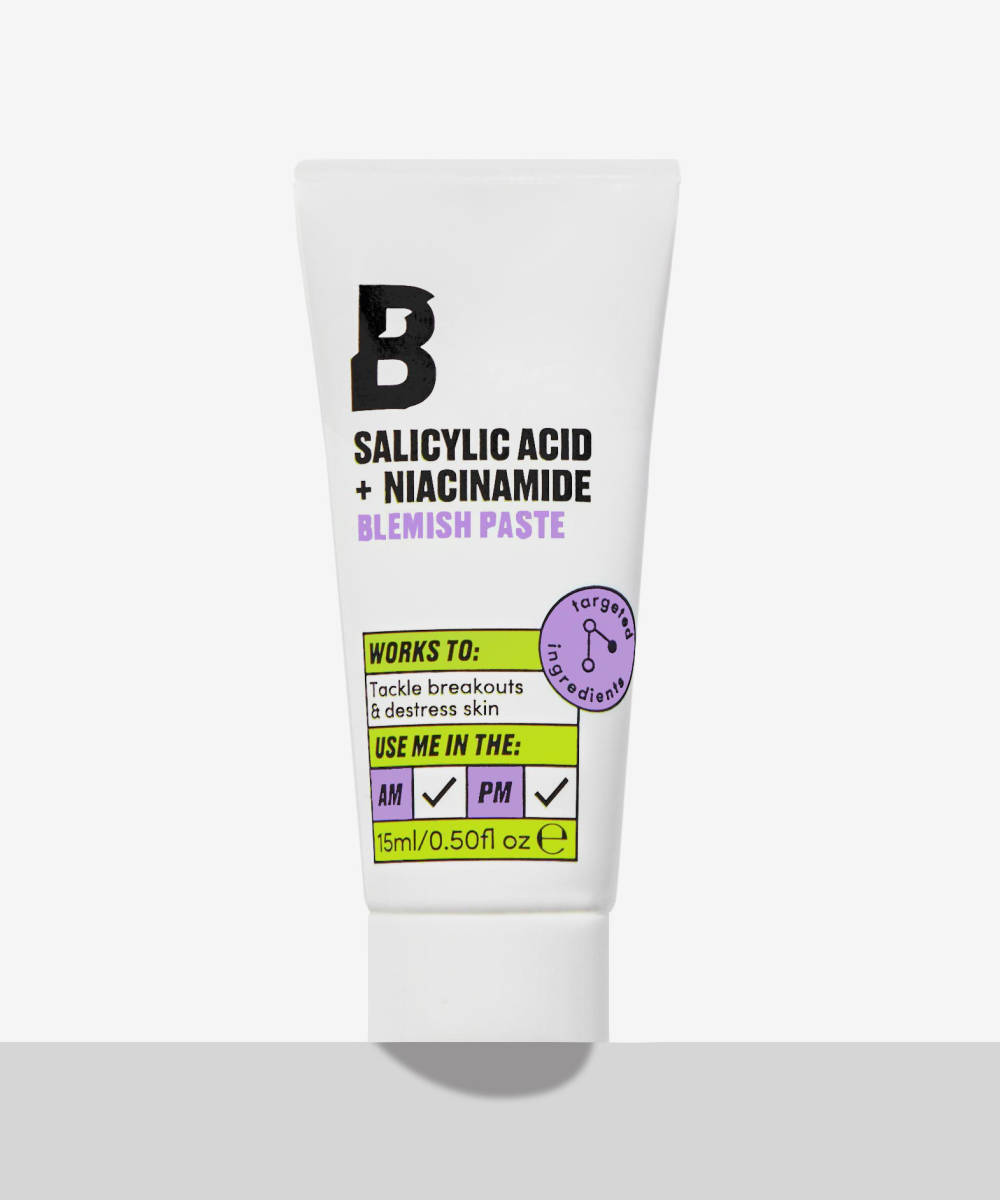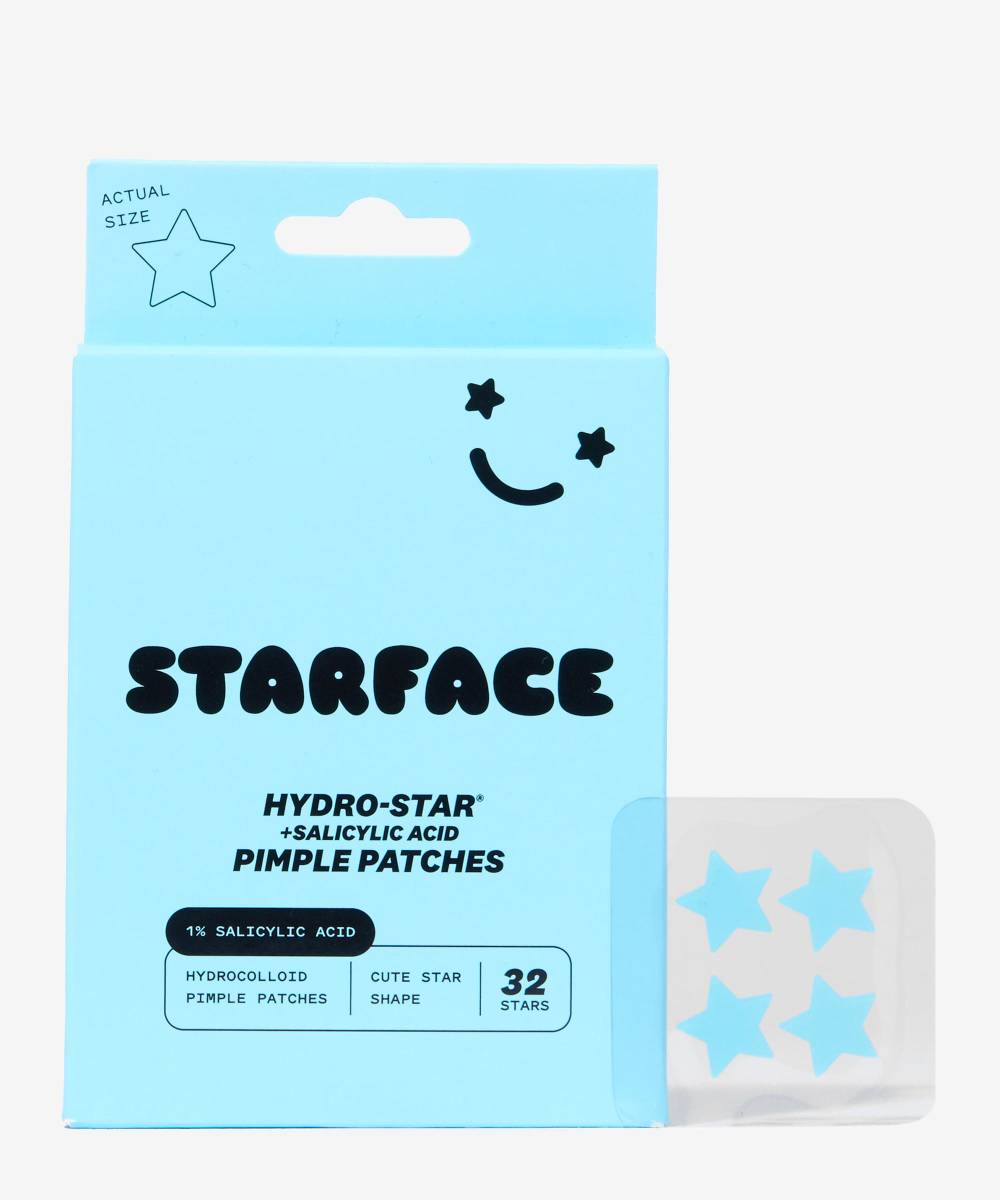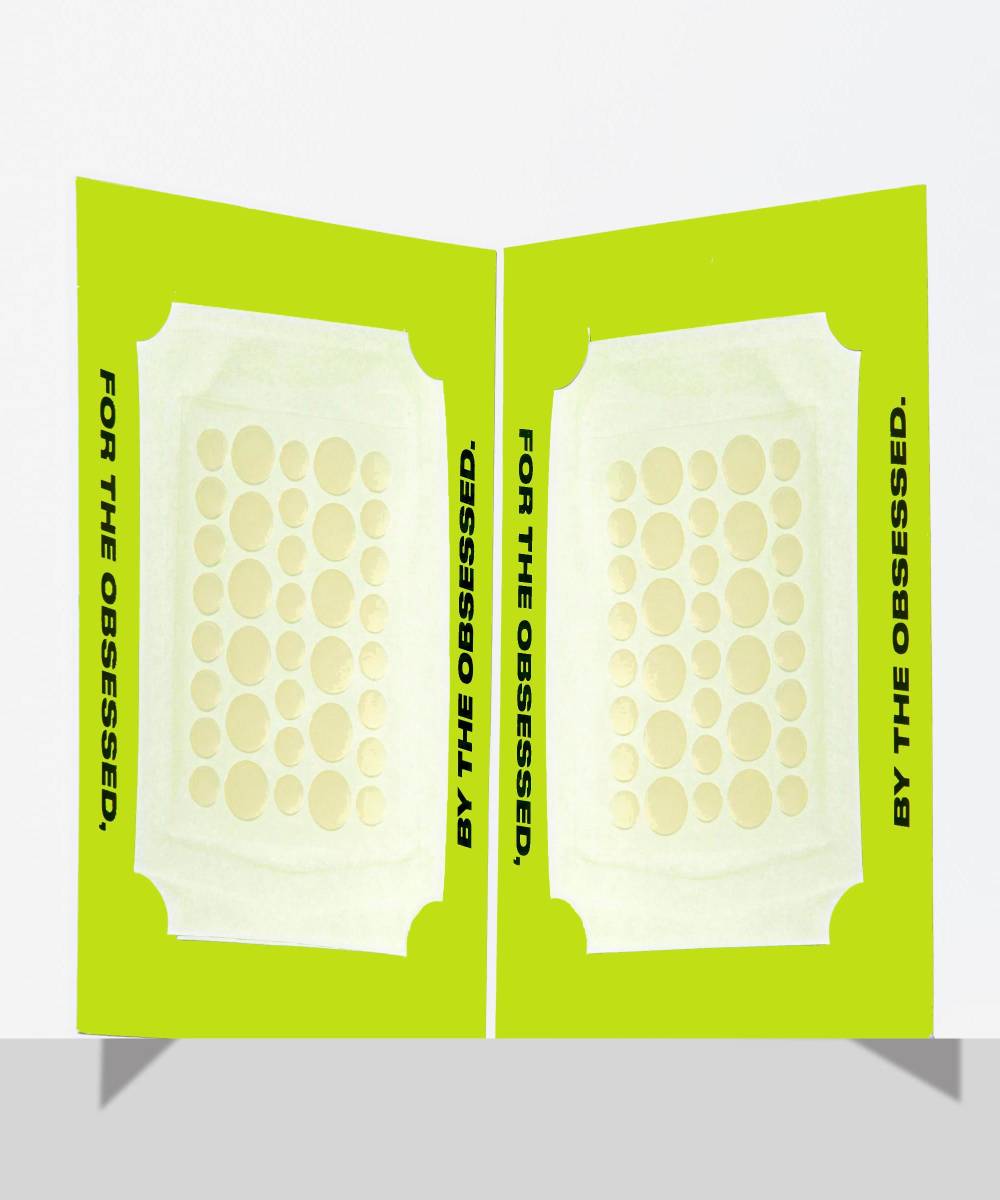If you’re prone to breakouts and want to get clearer, calmer skin, then you probably have a million questions about where to start. What products do you need? How do those products work? What order should you apply them in? To address any skin concern, you need to start with the basics, which is a skincare routine that involves cleansing, treating, moisturising, and protecting your skin. With acne, this means looking out for lightweight moisturisers, gentle cleansers, and ingredients like salicylic acid and niacinamide.
Scroll down for a simple, easy-to-follow daily skincare routine for acne-prone skin, featuring product recommendations and application tips.
Morning Skincare Routine for Acne-Prone Skin
1. Cleanse
Kick off your morning skincare routine by cleansing with a gentle gel-textured cleanser. Look out for ingredients like salicylic acid, which will help to unclog pores and remove excess oil from the skin without drying it out. Spend two minutes massaging your cleanser into your skin, then rinse it off using warm water and a clean flannel.
The best gel cleansers for acne-prone skin
2. Treat
When it comes to choosing a serum, look for a product which promises to calm and soothe. Ingredients like niacinamide, cica, prebiotics, and mushroom will help to reduce the inflammation and irritation that causes spots to appear angry and feel painful. Pat your serum onto damp skin, using your fingertips to gently press it in.
The best calming serums for acne-prone skin
3. Moisturise
Oily and acne-prone skin needs moisture just as much as dry skin does. If your skin isn’t hydrated then your oil glands will go into overdrive and produce even more sebum, which leads to shiny skin, clogged pores, and more breakouts. Keep your skin moisturised with a light gel-textured formula that contains hydrating ingredients like hyaluronic acid and glycerin. To apply, massage all over your face and neck.
The best moisturisers for acne-prone skin
4. Protect
UV exposure can cause early signs of skin aging and lead to skin cancer, but it also has an impact on breakout-prone skin. Since UV causes inflammation, it can make spots worse, and is also responsible for those annoying red marks that linger behind after a breakout. Look for a light-textured formula which has both UVA and UVB protection, and a minimum of SPF 30. Apply generously all over skin – 365 days a year!
The best SPFs for acne-prone skin
5. Target
Finally, apply a targeted spot treatment to any active breakouts. These products contain super-concentrated blends of acne-fighting ingredients such as salicylic acid, zinc, tea tree, and niacinamide which help to take down the blemish quickly and effectively. In the day time, you’ll probably want a treatment that appears invisible on your skin, so look out for clear, gel formulas (which absorb fast and sit well under makeup) or try spot stickers, which draw the impurities out of spots, prevent bacteria from getting in, and help to conceal any unwanted redness.
The best targeted spot treatments for acne-prone skin
Evening Skincare Routine for Acne-Prone Skin
Things get a little bit different when it comes to overnight skincare… You need a powerful cleanse to remove a day’s worth of makeup and grime, and it’s also your opportunity to make the most of active ingredients which aren’t recommended to use in the daytime, like acid-based exfoliators, masks, or retinol. This routine includes all the basics (cleansing and moisturising) with added extras that specifically help to both address existing breakouts and prevent future ones.
Scroll down for a simple, easy-to-follow evening skincare routine for acne-prone skin, featuring product recommendations and application tips.
1. Cleanse
No matter how tired you are, it’s super important that you wash your face before bed – especially if you’ve been wearing makeup. And no, face wipes and micellar water alone won’t cut it. Acne-prone skin will benefit from double cleansing, a process that ensures skin is left super clean. Start with an oil-based cleanser like a cleansing oil or balm which will remove makeup, dirt, and grime. Spend two to three minutes massaging it all over your face, then rinse it off using warm water and a clean flannel.
The best oil-based cleansers for acne-prone skin
2. Double cleanse
The second cleansing step gives a deeper cleanse for skin and provides an opportunity for you to utilise active ingredients like exfoliating acids or charcoal to help target clogged pores, excess oil, and active breakouts. Thoroughly massage into skin (you may want to use an electronic cleansing tool with this step), then rinse off with warm water and a clean flannel.
The best second cleansers for acne-prone skin
3. Exfoliate
It’s important not to over-exfoliate your skin, especially if your skin is sensitive and breakout-prone, so this step should only be done twice a week. Whether a clay mask, acid toner, or overnight treatment (in which case skip the following steps) these powerful exfoliants will help to target long-term issues like stubborn congestion along the jawline, blackheads around the nose, or scarring on the cheeks.
The best exfoliating treatments for acne-prone skin
4. Treat
Serums are concentrated blends of ingredients chosen to address specific skin concerns. For acne-prone skin, look out for ingredients like glycolic, lactic, or salicylic acid, or retinol in your evening serum. These ingredients are best applied overnight as they increase skin’s sensitivity to UV. Pat your serum onto damp skin, using your fingertips to gently press it in. Skip this step on nights when you’ve used an exfoliating treatment, and always remember to wear an SPF the following day.
The best overnight serums for acne-prone skin
5. Moisturise
Hydrated skin is healthy skin and healthy skin is better able to heal and fight breakouts, so don’t skip this vital step. Use a gel-cream textured moisturiser which focuses on hydration and don’t be tempted to use anything that’s loaded with “acne-fighting” ingredients – your skin has already got these from your serum and doesn’t need overloading. To apply your night cream, massage generously all over your face and neck.
The best night creams for acne-prone skin
6. Target
While in the morning you probably want your spot treatments to absorb fast and appear invisible, you probably don’t have the same concern at night. Look out for hero ingredients like salicylic acid, niacinamide, zinc, and calamine which help to quickly reduce inflammation and clear the impacted pore. For spots that have already come to a head or have broken skin, apply blemish stickers to draw out congestion and prevent bacteria from entering the wound.

